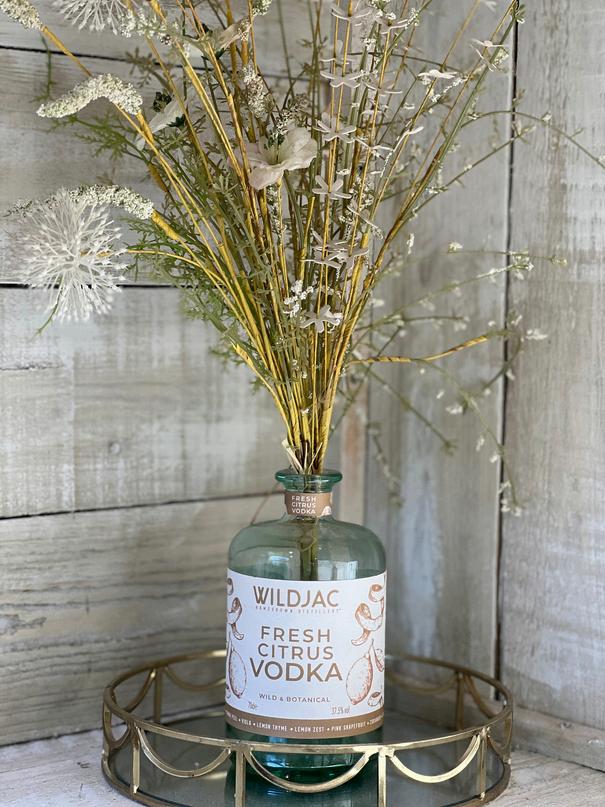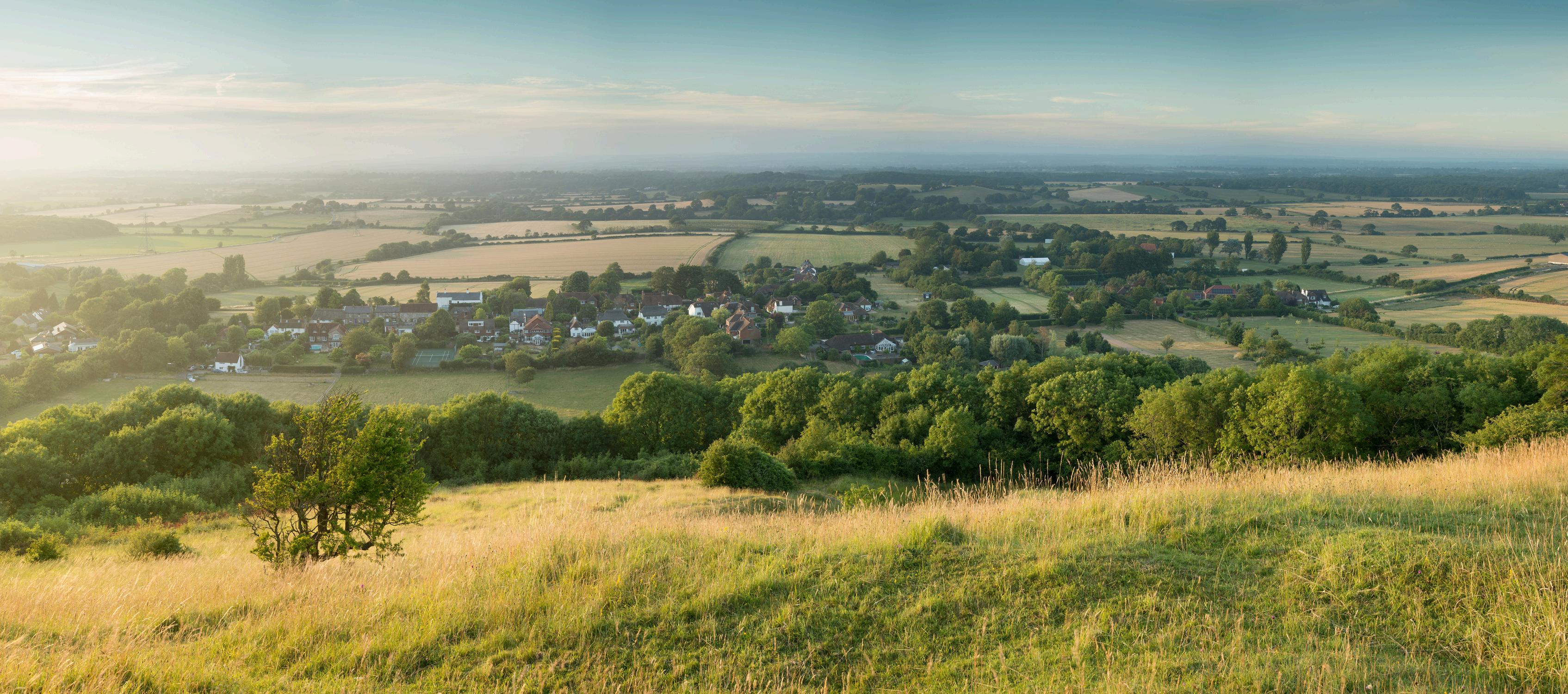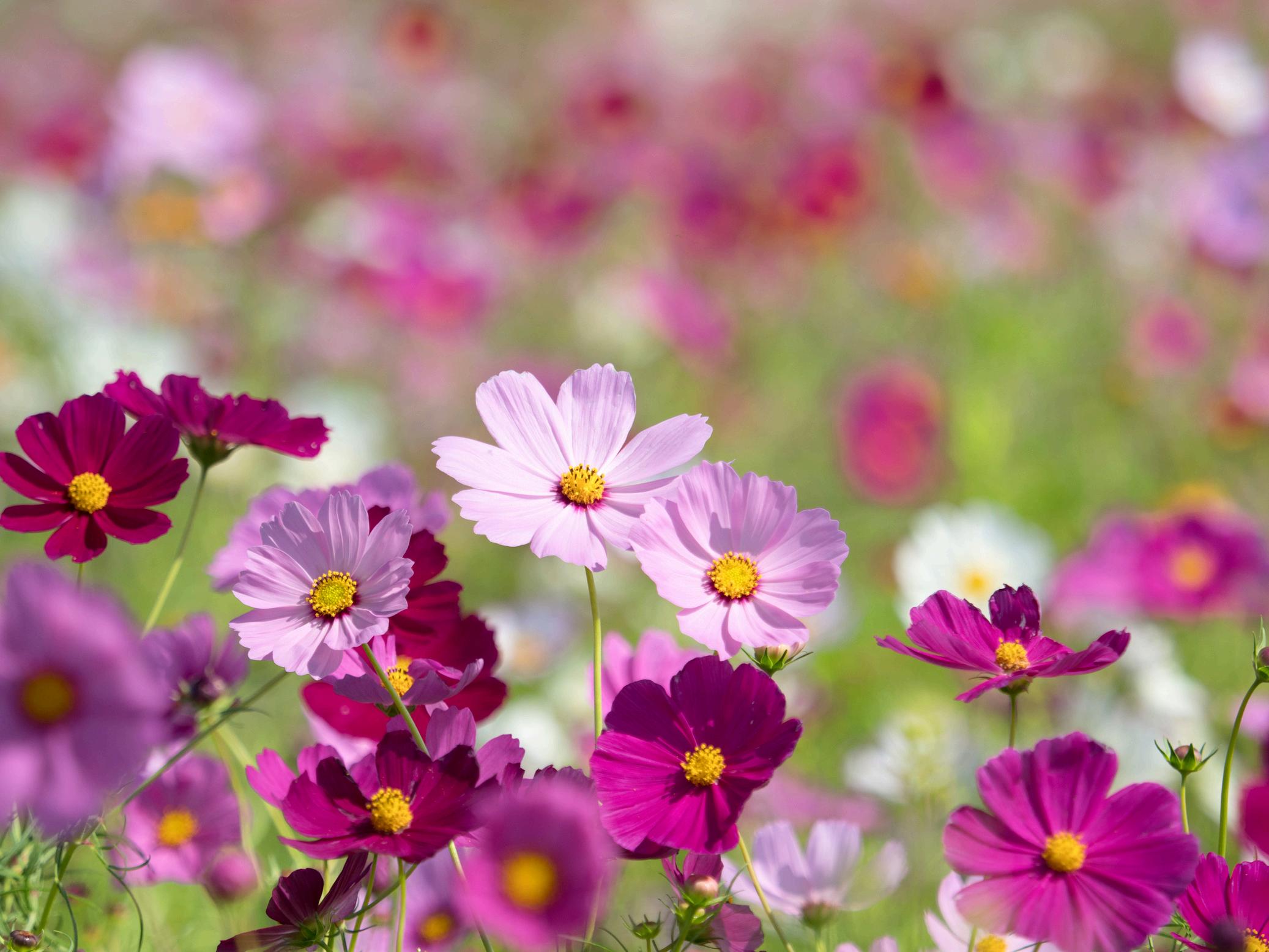



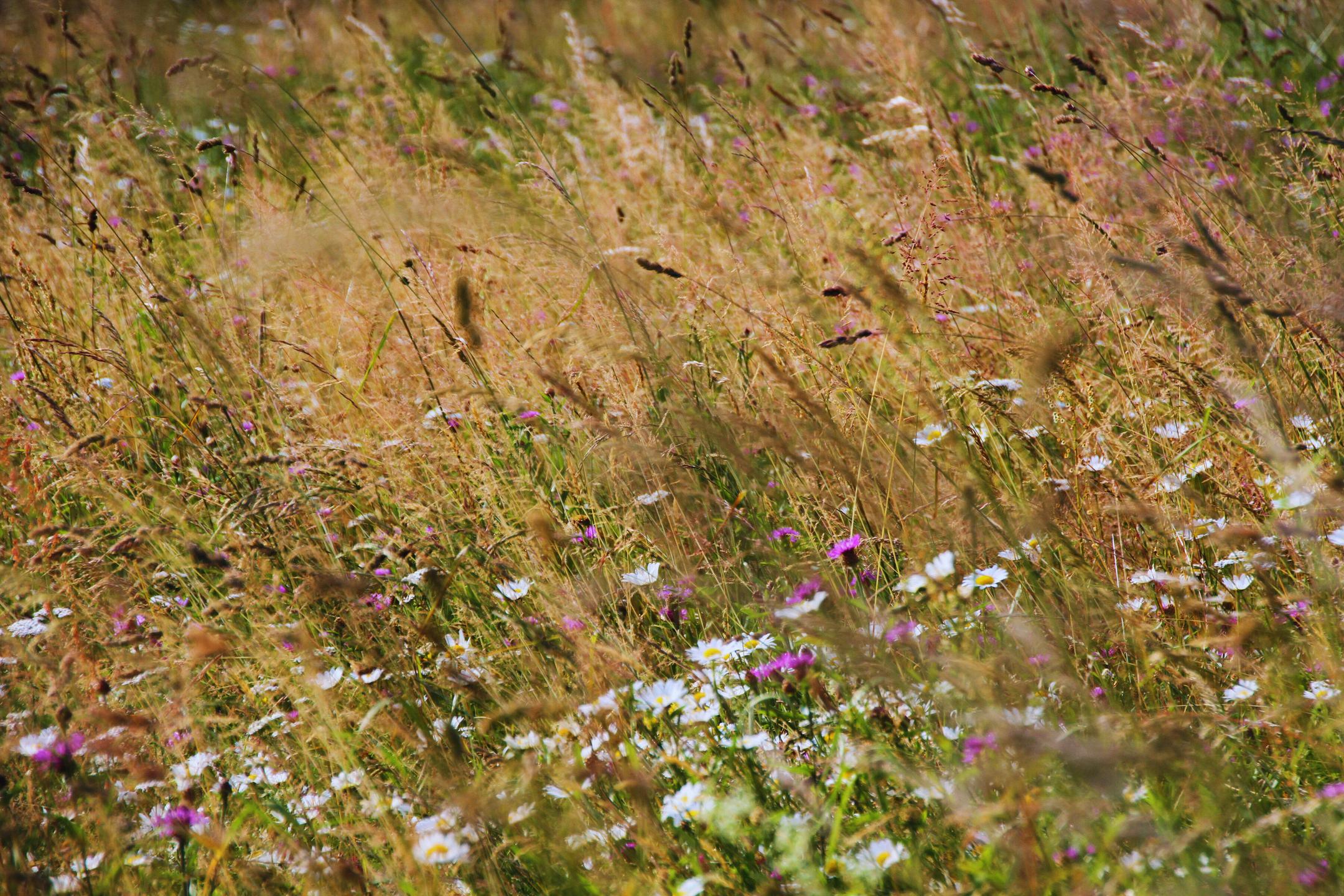
“Keep your face to the sunshine and you cannot see a shadow.”
- HELEN KELLER







“Keep your face to the sunshine and you cannot see a shadow.”
- HELEN KELLER

Dear Readers,
I find this season to be a beautiful reminder of the warmth and energy that life offers us. It's a time to savour the simple pleasures, embrace the outdoors, and celebrate the abundance of the growing season
Summer, for many of us, means more time spent outside, whether it’s tending to our gardens, enjoying family picnics, or simply soaking up the sunshine There’s something incredibly rejuvenating about feeling the sun on our skin, hearing the rustle of leaves in the breeze, and seeing our gardens flourish with life It's a season that invites us to slow down and reconnect with the world around us.
In this summer edition, we focus on ways to make the most of this vibrant season while staying true to our commitment to sustainability. We bring you tips on creating eco-friendly gifts, from sustainable gardening practices to setting up green retreats in your garden You'll find inspiration for outdoor activities that not only entertain but also promote a healthy, active lifestyle.
Our features on seasonal cooking celebrate the bounty of summer, with recipes that highlight fresh, local ingredients. From garden-to-table meals that burst with flavour to refreshing drinks that cool you down on the hottest days, we aim to bring the taste of summer right into your kitchen
Summer is also a time for adventures and exploration. Whether you're planning a staycation, exploring local parks, or embarking on a new hobby, we ’ ve got ideas to make your summer days fun and fulfilling, all while being mindful of our impact on the planet.
So, as we bask in the warmth and light of these sunny days, let’s e Here’s to a season filled with growth, outdoor adventures, and sus
Warm regards,
ASTER SADLER
Bring spring flavours from the wild into your kitchen
WYRE COMMUNITY LAND TRUST
Discover our charity partner in the Wyre Forest
BEHIND THE BOTANICAL
Learn about the variety of uses for Lemon Balm
RECIPE: LEMON ETON MESS
A guide to nature’s soundtrack at dawn and dusk
RECIPE: SMOKED APPLE BBQ SAUCE
Perfect for grilled meats & vegetables
JAM JAR FLOWER ARRANGEMENTS
SIP INTO SUMMER
Refreshing cocktails with a twist
STOP, YELLOWHAMMER TIME
Protecting Ground-Nesting Birds on Worcestershire’s Heathlands
COPPICE LIFESTYLE

Discover a small family lifestyle business
THE HISTORY OF THE COLOR GOLD
An Ancient civilization
ENCOURAGE WILDLIFE IN YOUR GARDEN
Top ornamental tree from Frank P Matthews
INVITE WILDLIFE HOME
Tips for creating a wildlife-friendly garden
SOW & GROW:
Extend your growing season in late summer
Win a Spring Bundle from Atlantic Blankets and Wildjac
Cosy up with our pick of the top reads

ARTICLE CONTRIBUTORS
Ashleigh Bourne - Managing Director, Wildjac
Katie Jones - Marketing Lead, Wildjac
Aster Sadler - Founder, Wildjac
CHARITY CONTRIBUTORS
Wendy Carter - Worcestershire Wildlife Trust
Liz Trust - Wyre Community Land Trust
BUSINESS CONTRIBUTORS
Ashleigh Bourne - Managing Director, Wildjac
Katie Jones- Marketing Lead, Wildjac
Zak Southwood - Frank P Matthewss
Macy Smith- Coppice Gardens
PHOTOGRAPHY
Sadie Aldridge - Sadie Aldridge Photography
WORCESTERSHIRE WILDLIFE TRUST
Wendy Carter
FOOD CONTRIBUTOR
Bryony Taylor
COCKTAILS
Aster Sadler
Katie Jones
DESIGN/EDITING
Jamie Detton & Jessica Ralph
Buy-From Creative Agency

“The sun, the earth, love, friends, our very breath are parts of the banquet.”
- REBECCA HARDING DAVIS
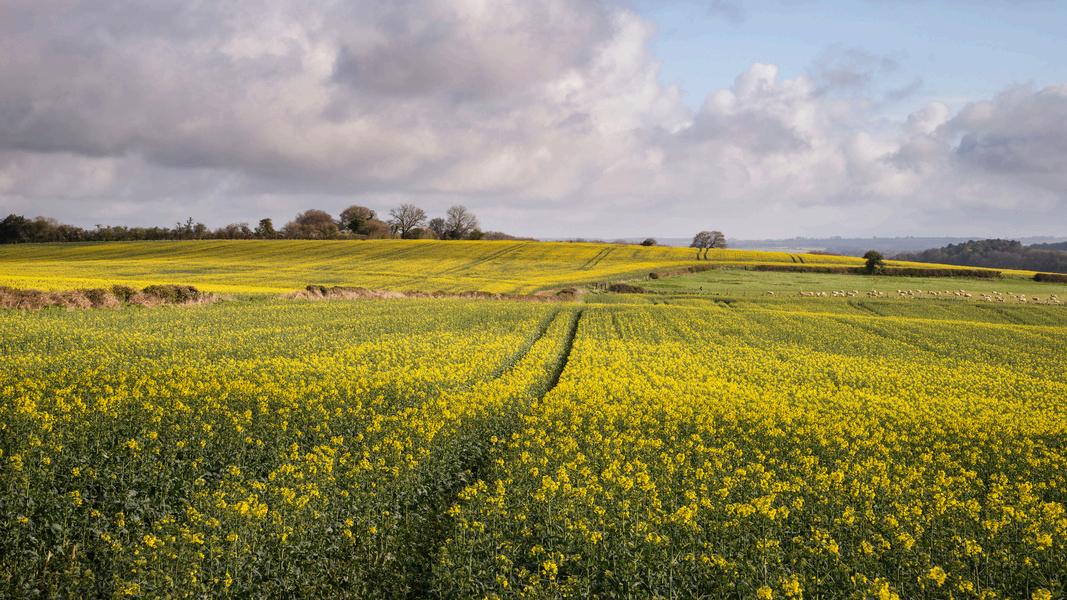

As summer's warm embrace extends across the United Kingdom, the call to explore its stunning landscapes becomes irresistible This season, embark on a journey to destinations that offer both beauty and sustainability Discover places where eco-friendly practices enhance your experience, ensuring a memorable and responsible holiday.
By Katie JonesNestled amidst undulating hills and serene lakes, the Lake District is a beacon for sustainable tourism Wander along ancient trails, breathe the crisp air, and perhaps even join a local conservation effort. The Lake District’s commitment to preserving its natural splendour makes it a quintessential eco-friendly retreat 01
The rugged coastline of Pembrokeshire is not only breathtaking but also a testament to sustainable living. Here, you’ll find green accommodations that blend seamlessly with the landscape Explore the coastal paths, where every turn reveals another stunning vista, and partake in marine wildlife tours that respect and protect the vibrant underwater ecosystems
The Isle of Eigg stands as a model of self-sufficiency and environmental stewardship Powered entirely by renewable energy, this island offers a unique escape. Stay in eco-friendly guesthouses, join guided wildlife tours, and learn about the island's innovative sustainability projects The sense of community and harmony with nature here is palpable, making every visit transformative.



05 04

In the heart of Hampshire lies the enchanting New Forest National Park, a haven for wildlife and nature lovers Explore the ancient woodlands, spot free-roaming ponies, and enjoy outdoor activities such as cycling and horse riding, all while supporting conservation efforts
A journey to the Eden Proj l k stepping into a botanical w Its iconic biomes house pla diverse climates, educating about sustainable living an interconnectedness of life. friendly accommodations n organic food, and immers interactive exhibits that inspire a deeper connection to the natural world. 06
Northumberland National Park, with its vast, unspoiled landscapes and rich history, is a perfect destination for eco-conscious travellers The park's commitment to preserving its natural beauty and cultural heritage ensures an enriching experience for all visitors. Hike along Hadrian's Wall, explore ancient ruins, and immerse yourself in the tranquility of nature


These destinations are more than just places to visit; they are experiences that foster a profound respect for nature. By choosing eco-friendly travel options, you not only enrich your own journey but also contribute to the preservation of these beautiful landscapes for future generations.

Summer in the British countryside brings a burst of life, offering endless opportunities for wildlife enthusiasts. The UK boasts numerous sanctuaries where nature's wonders can be observed in all their splendour. Here, we guide you to the best spots for wildlife watching, promising encounters that will captivate and inspire.
By Katie JonesVenture into the wild expanse of the Cairngorms
National Park, where the rugged beauty of Scotland meets an abundance of wildlife.
Here, golden eagles rule the skies, and red squirrels dart through ancient forests The majesty of the Highland wildcat can still be glimpsed by the fortunate few. Summer reveals the park in its verdant splendour, a living, breathing canvas of nature's artistry.
The Cairngorms is home to an array of wildlife, from the elusive pine marten to the mighty capercaillie. As you explore its trails, you may also encounter the rare Scottish crossbill, the only bird unique to the UK
This national park is a testament to Scotland's commitment to preserving its natural heritage, offering visitors a chance to immerse themselves in a landscape where nature truly thrives


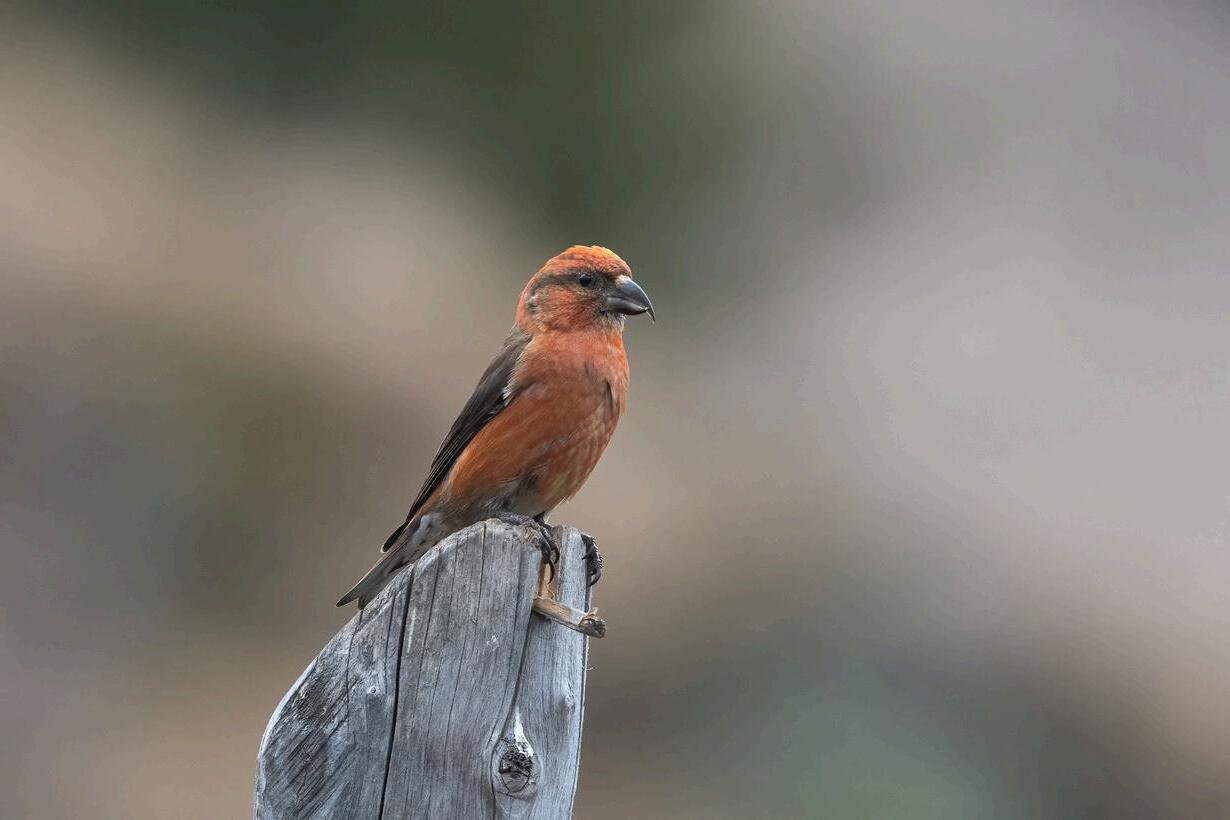 The rare Scottish Crossbill
The Cairngorms National Park
The rare Scottish Crossbill
The Cairngorms National Park


TheSouthDowns offermorethanjust visualbeauty;they provideahabitatfor thesedelicate creatures,ensuring theirsurvivalfor generationstocome.
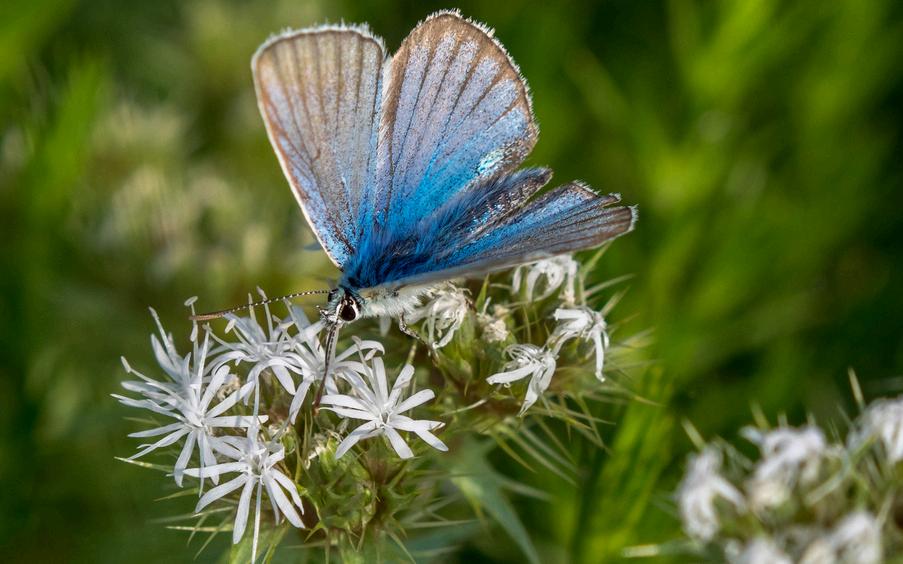
The rolling hills of the South Downs are not just a scenic delight but also a paradise for butterfly enthusiasts. In summer, the chalk grasslands come alive with fluttering Adonis blues and silver-spotted skippers The South Downs offer more than just visual beauty; they provide a habitat for these delicate creatures, ensuring their survival for generations to come
Walking through the South Downs, you'll be captivated by the vibrant colours and the delicate dance of butterflies The area also supports a rich tapestry of other wildlife, including rare orchids and a variety of birds It's a living testament to the importance of conserving our natural landscapes.
Pictured are the South Downs and the beautiful Adonis Blue butterflys.
surrounding waters host playful seals and the gentle giants of the sea, basking sharks
marine world. The island's clear waters provide a perfect habitat for a range of species
the coastal paths or diving into the underwater world, Lundy offers an unforgettable wildlife experience

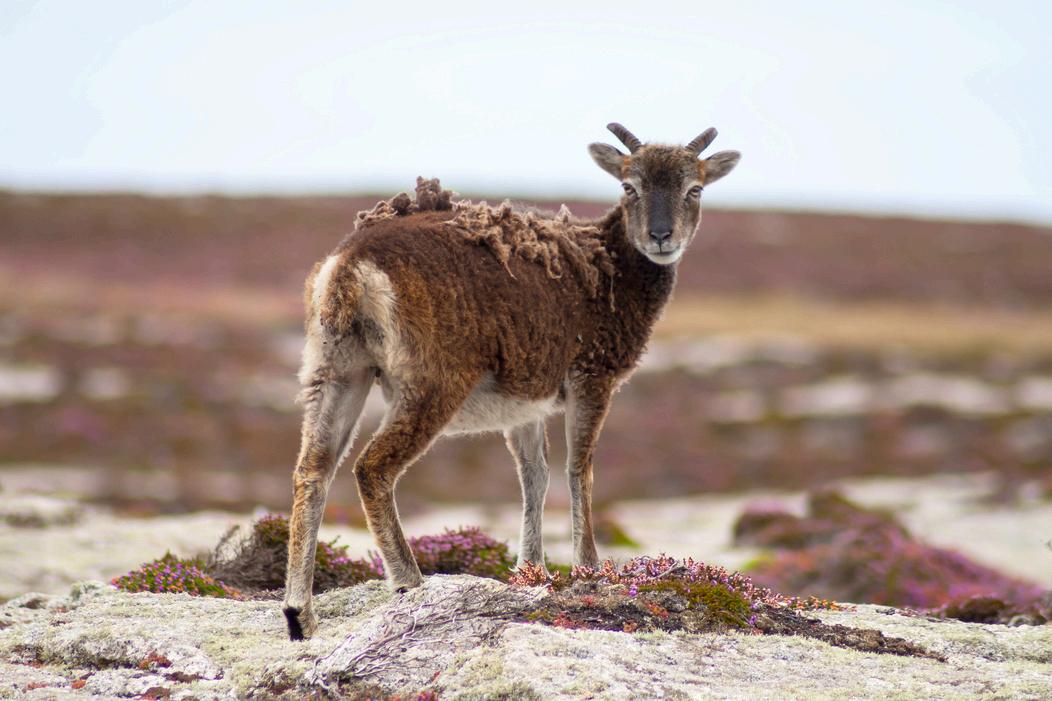
Witnessing wildlife in its natural habitat is a privilege that inspires a deeper connection to the environment. These locations offer a front-row seat to nature's grand theatre, where every moment is a reminder of the delicate balance we strive to protect.
Pictured above is a Ruddy Turnstone


On a sunny morning in March, my team and I headed to the beautiful workshop space in the Wyre Forest to attend the Pigment to Paint Workshop run by the Wyre Community Land Trust
Led by Olivia Mabey, a local artist, we started off by discovering a little about the history of pigment paints and the clays used to create them. We used natural pigments from Okhra, Ecomuseum of Ocher (Roussillon, Provence) and, using Olivia’s recipe, blended, mixed, and scraped the pigments until we had perfectly smooth paints
I was itching to use them, so after filling a small watercolour pan, we grabbed some watercolour paper and headed outside to find some inspiration in nature There were some lovely leaves, pinecones, and acorns which really lent themselves to the deep browns, greens, and ochres that we had made, so we got cracking!
After some lovely tea and plenty of cake, the time had flown by, and it was time to finish up and pack up our tins of freshly made paint (while keeping them level!) in an array of colours. What a fantastically creative day!
Want to try it? Email events@wyreclt.org.uk

 By Aster Sadler
By Aster Sadler
Since 2007, the Wyre Community Land Trust has been working to conserve the Ruskin Land within the Wyre Forest and its wildflower meadows, orchards and wood pastures The trust depends on around 40 dedicated volunteers who help carry ou year round

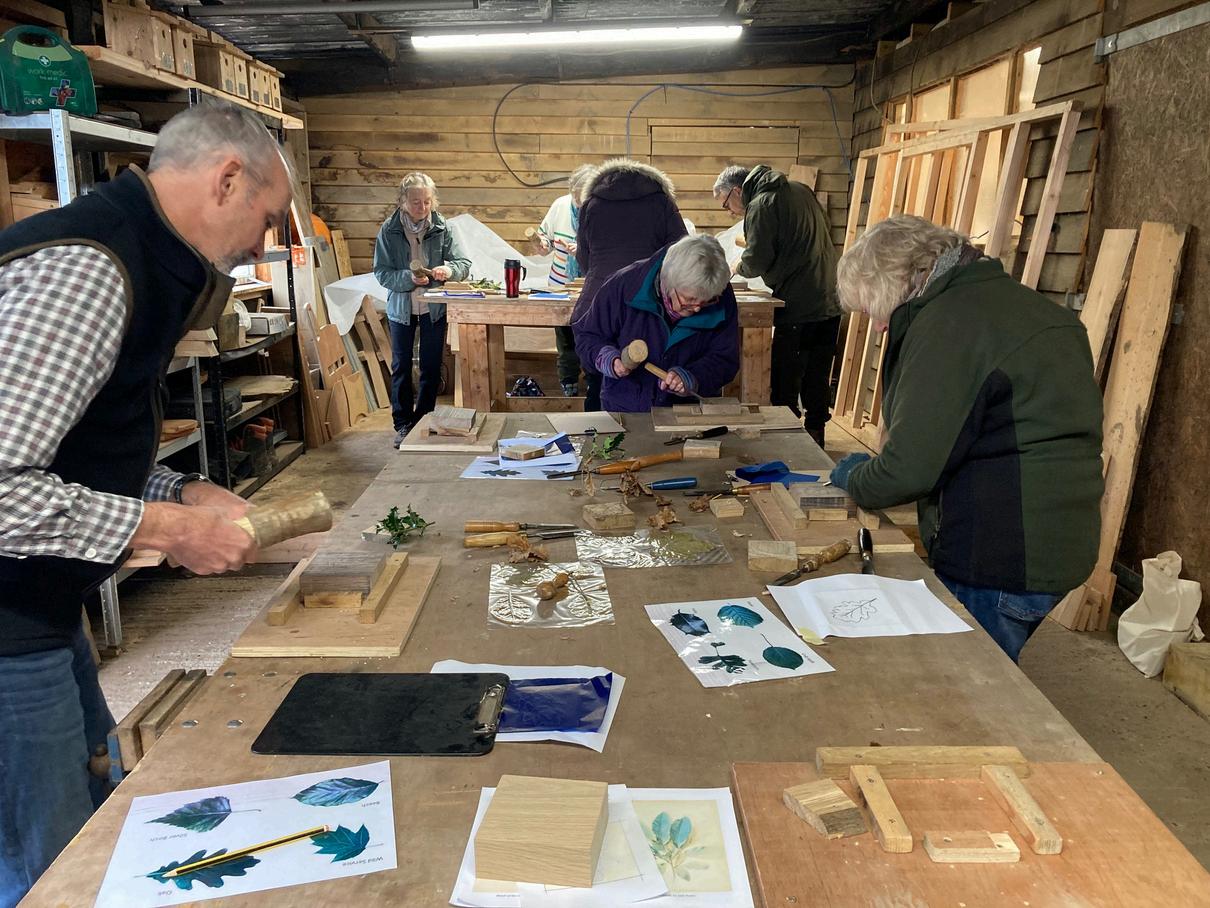
Learn the art of wood carving using traditional tools and techniques and carve your own leaf design into a piece of oak Wyre Community Land Trust To book, contact events@wyreclt.org.uk
SATURDAY JULY 6th 9.30 - 12.30, £40
See upcoming events from WCLT here
"The keeping of bees is like the direction of sunbeams"- HENRY DAVID THOREAU






I've always had a love for craft ale, particularly light and citrus flavours.
Becoming a 'Wildjacker' introduced me to the world of spirits, and I quickly developed a passion for citrus vodka, which now holds a prime spot on my spirits shelf This particular citrus vodka, with its Worcestershire hops, strikes the perfect balance for me, combining my love for beer with the exciting world of spirits.
This citrus vodka is fantastic for cocktails, especially when shared with friends. One of my favourite ways to enjoy it is with a slice of lime and Fever Tree lime soda; the lime adds an extra burst of citrus zest that elevates the experience It's refreshing, tangy, and absolutely delicious
I’m also excited to experiment with this citrus vodka in cooking I can’t wait to try drizzling it as a sauce over a lemon dessert, adding a unique twist that blends the citrusy notes beautifully This versatile spirit has truly become a favourite of mine
By Ashleigh Bourne, MD Wildjac
Did you know?
Lemon juice is a natural meat tenderiser due to its high acidity, which breaks down the proteins in meat, making it softer and more flavourful when marinated.

Lemon balm (Melissa officinalis), a member of the mint family, is a perennial herb native to Europe, North Africa, and West Asia. With its lemon-scented leaves, this plant has a rich history and a variety of uses ranging from culinary to medicinal.
In this article, we'll explore the history of lemon balm, guide you through growing it in your own garden, and highlight its herbal and medicinal uses.
Lemon balm has been used for over 2,000 years to improve mood, aid digestion, and treat wounds. Its name "Melissa" is derived from the Greek word for 'honey bee', as the plant's nectar-rich flowers attract bees. Historically, the Greeks and Romans revered it for its calming effects and used it to dress wounds and treat venomous insect bites and stings
In the Middle Ages, lemon balm was incorporated into creams and oils used in aromatherapy to reduce stress and anxiety, promote sleep, and improve symptoms of depression It was also used in kitchens and gardens as a culinary herb and was believed to have magical properties that could prolong life

Lemon balm's small, white flowers are highly attractive to bees and other pollinators, making it a beneficial plant for gardens focused on promoting biodiversity.
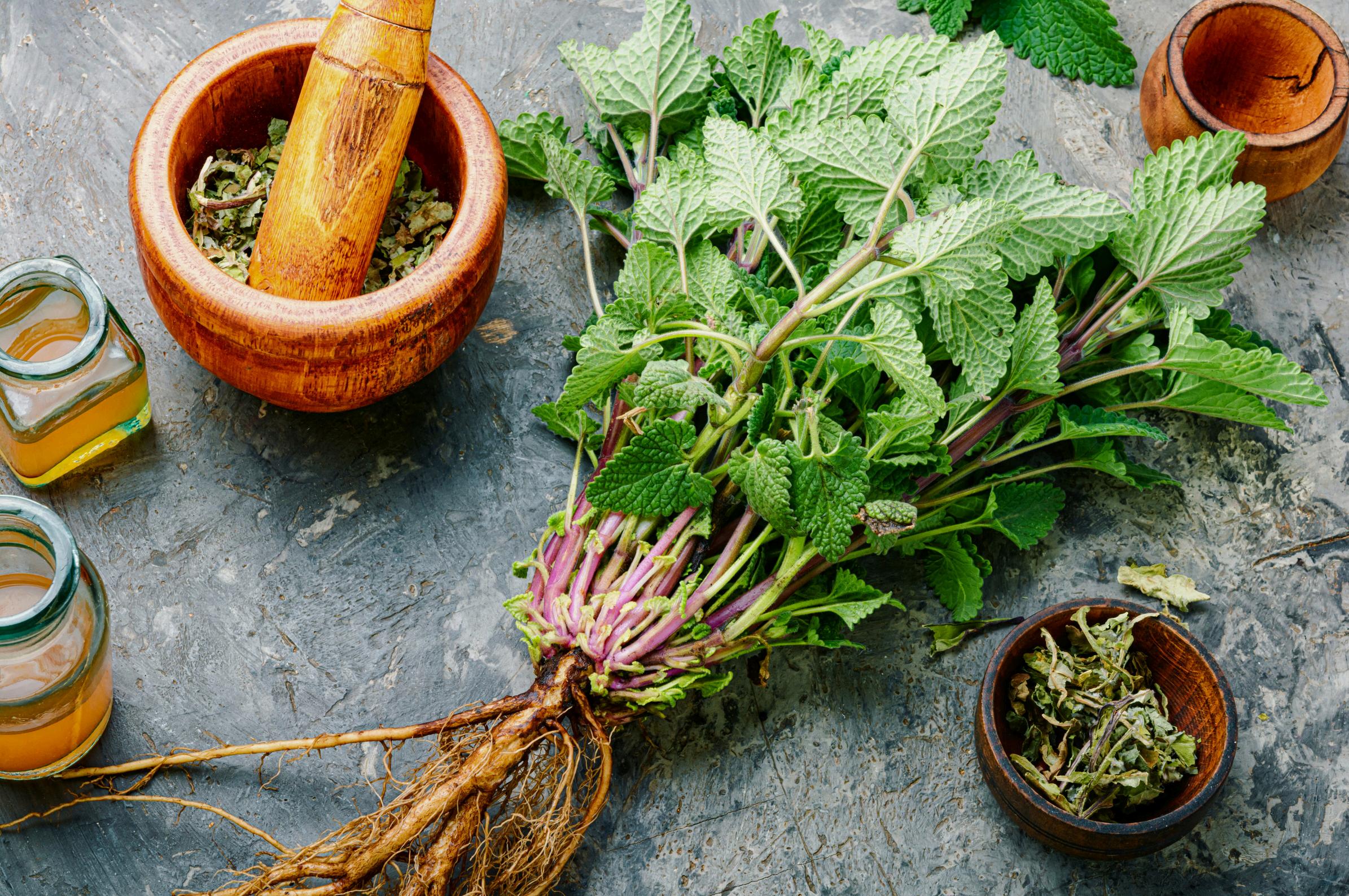


Growing lemon balm is a rewarding endeavour due to its minimal care requirements and its ability to thrive in a variety of climates. Here’s how to grow this aromatic herb:
Location and Soil: Lemon balm prefers full sun to partial shade and well-drained soil rich in organic matter It is hardy in USDA zones 3-7 and can tolerate a range of soil conditions but flourishes best in moist, fertile soil.
Planting: You can start lemon balm from seeds, cuttings, or seedlings Plant seeds or seedlings in spring after the last frost. Space the plants 18 to 24 inches apart, as they will spread.
Care: Keep the soil consistently moist but not waterlogged Mulching helps retain moisture and control weeds Lemon balm doesn’t usually require fertilisation if planted in rich soil Prune the plants to encourage bushy growth and prevent them from becoming leggy.
Harvesting: Harvest lemon balm leaves before the plant flowers for the best flavour You can cut the whole stems or just pick leaves as needed. Regular harvesting encourages new growth.

4-6 servings 20 minutes
250ml Double Cream, chilled
2 tablespoons Caster sugar or icing sugar
1 teaspoon vanilla extract
250g Meringue nests, crushed into pieces or mini meringues
6-8 tablespoons Lemon Curd
For an extra zingy twist, drizzle with extra citrus vodka and garnish with a sprig of lemon balm
For an elegant party option, serve in individual martini glasses
1.
In a large bowl, prepare sweetened whipped cream by combining double cream, sugar, and vanilla (note: if using caster sugar, let the sugar sit in the cream for 1-2 minutes to dissolve before whipping) Whip using a hand or electric mixer until soft peaks form. Keep chilled until use.
Crush meringues into pieces using a rolling pin or your hands. 2
3
Prepare lemon curd and gather a glass bowl or serving cups.
4.
Fold in citrus vodka to the whipped cream just before serving
Assembly
1. Repeat this process until each cup is 3/4 full Sprinkle a few crushed meringue pieces on top as garnish
At the bottom of each of your serving dishes, spoon approximately 2 tablespoons of whipped cream and add 1-2 teaspoons of lemon curd and a couple of meringue pieces.
2 Enjoy!3.

1 tbsp olive oil
4 cloves of garlic, crushed
1/3 cup light soy sauce
2/3 cup ketchup
2 tbsp Worcestershire sauce
1 1/2 tsp sriracha sauce
2 tsp smoked paprika
1 tsp liquid smoke flavouring (optional)
50ml Apple Spiced Rum
1/3 cup light brown sugar
1 tsp onion powder
1 tbsp red wine vinegar
Spread thickly on ribs, steaks, or BBQ chicken wings, or use as a dip!
Store in sterilised jars in the fridge for up to 1 month
1
In a nonstick pan over medium heat, add the oil and fry the garlic until softened and cooked through.
6 servings 20 minutes
4
Add the remaining ingredients and stir until combined. Allow to cook until thickened, stirring occasionally for about 20 minutes
2 Taste and add more sugar or vinegar as required 3. Once slightly cooled, pour into a sterile jar and store in the fridge until ready to serve.
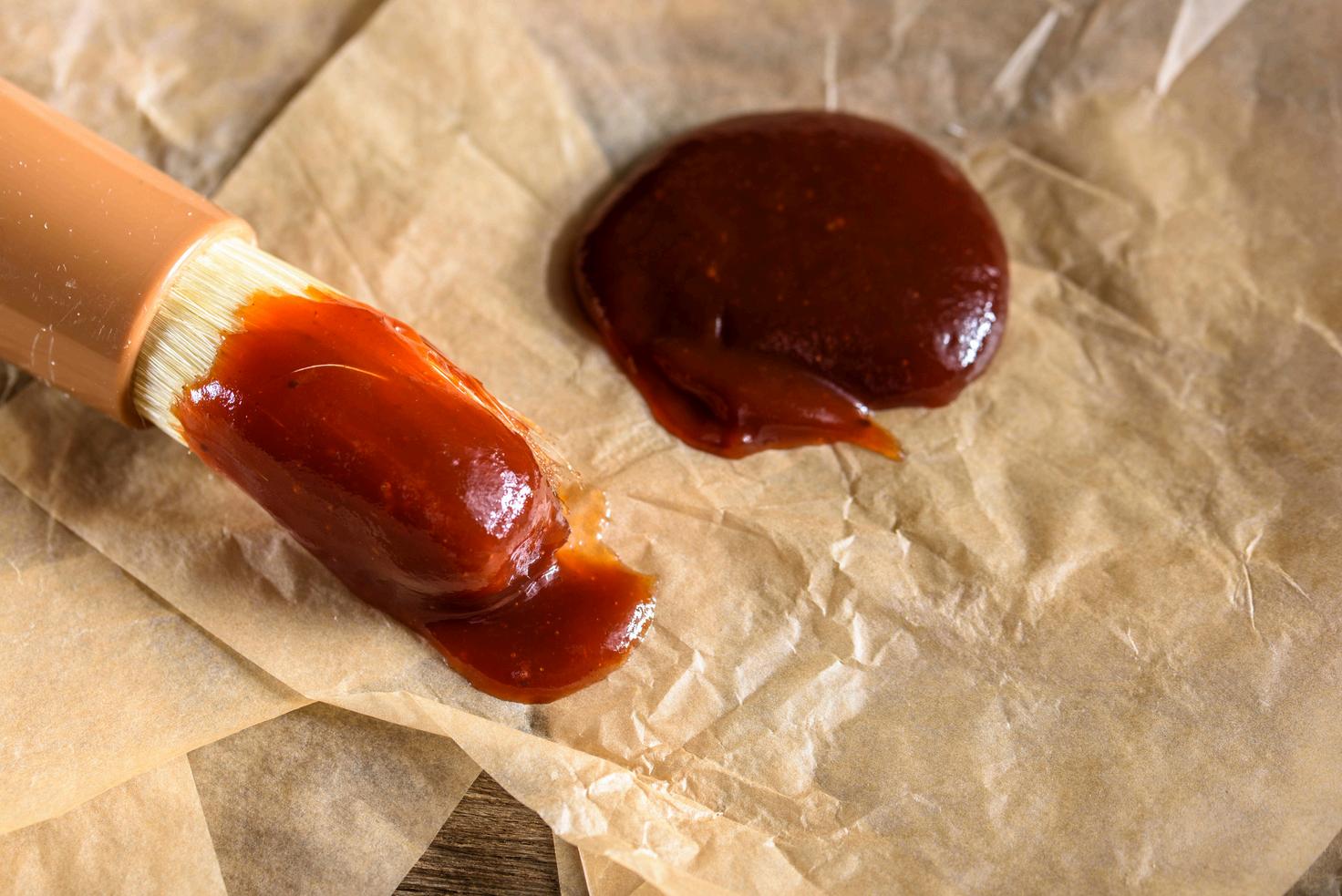


Jam jar flower arrangements are not only a delightful way to brighten up your space but also an excellent opportunity to engage in eco-friendly practices Using recyclable materials and local flora, these charming decorations can enhance your home or event while being kind to the planet. Here’s how to make your own sustainable jam jar arrangements
Materials Needed:
Clean jam jars of various sizes
Fresh, locally sourced flowers
Native greenery and filler plants
Biodegradable ribbon or twine (optional)
Water
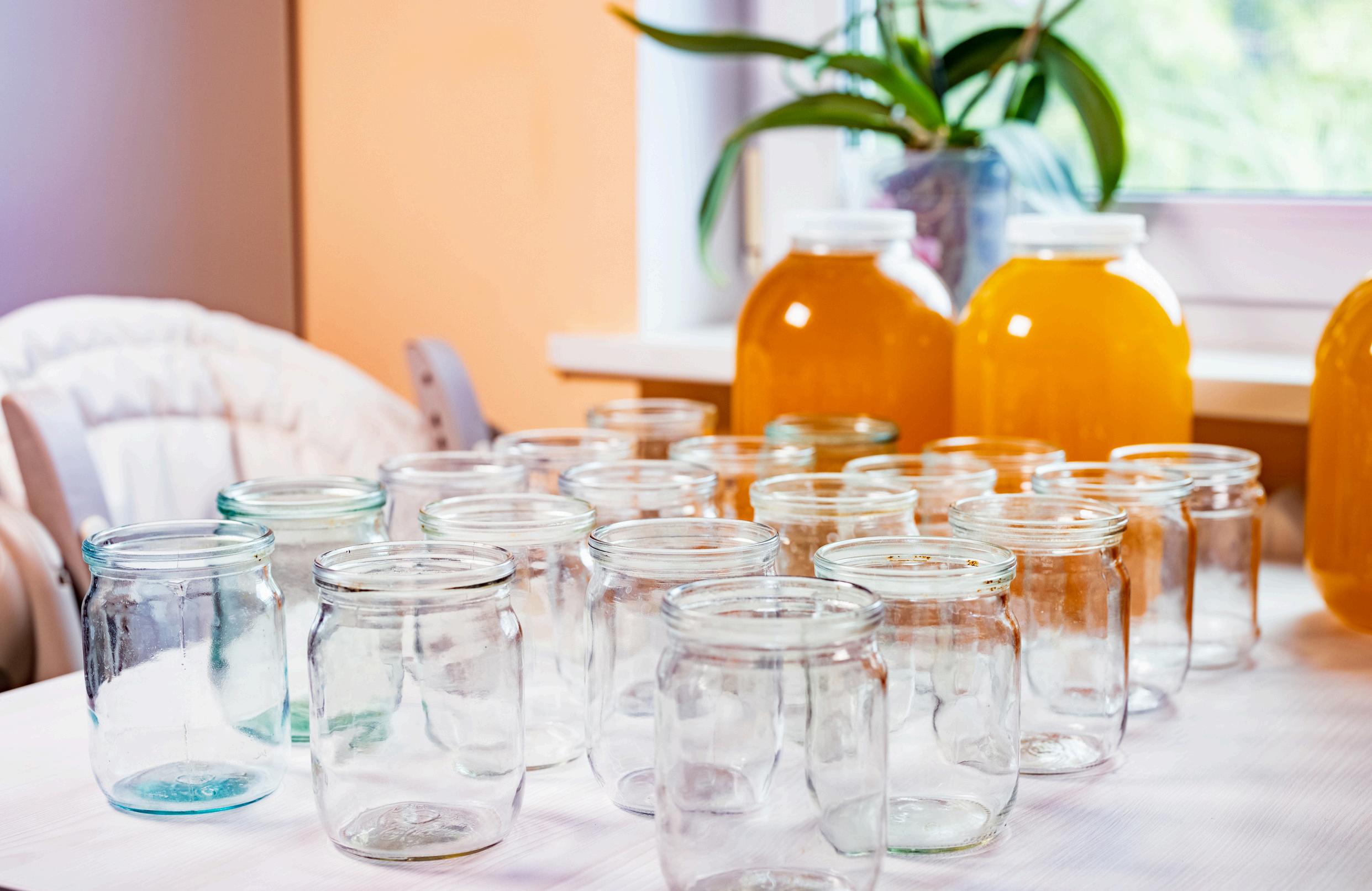

Gather various jam jars reusing these glass containers is a perfect start to an eco-conscious project Clean them thoroughly with eco-friendly soap to remove any residues.
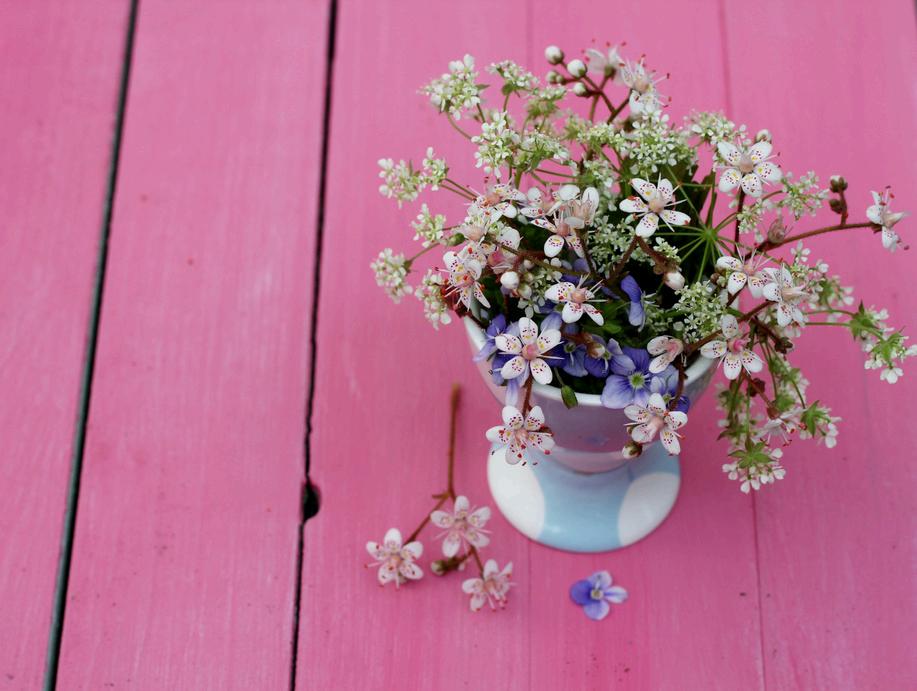
Opt for locally grown flowers to support local farmers. Seasonal flowers not only last longer but also have a smaller environmental impact due to reduced transportation and greenhouse gas emissions.
Cut the stems at a 45-degree angle under running water to promote water uptake. Use sharp, clean scissors to prevent crushing the stems. Remove any leaves that might sit below the waterline in the jar to discourage bacterial growth.
Use native greenery as your base. This not only supports local ecosystems but also ensures your arrangements are more adaptable to the local climate.
Place your largest, most vibrant flowers strategically. These are the centrepiece of your arrangement, so ensure they’re visible and positioned to showcase their natural beauty.

Use a variety of shapes and sizes of flowers for the most eye capturing arrangement. Interspersing delicate greenery with help the colours pop.

Incorporate smaller, complementary flowers to fill gaps and add depth. Mix colours and textures for a more visually appealing effect.
Adjust your flowers to create a balanced, aesthetically pleasing arrangement. Be mindful not to overcrowd the jars, as good air circulation helps the flowers stay fresh longer.
Use clean, room-temperature water, and fill the jars sufficiently to cover the stem ends This simple step is crucial for the longevity of your blooms.
For an added touch, wrap biodegradable twine or ribbon around the jars. This can enhance the aesthetic while maintaining an environmentally responsible approach.

Choose a spot that receives indirect sunlight, as direct sunlight can wilt the flowers faster.
Change the water every two days to maintain freshness Use leftover water for houseplants or gardens to minimize water waste. Remove any dead petals or leaves to prevent mould and keep the arrangement looking its best


Summer is the perfect time to explore the vibrant world of cocktails, where fresh, fruity flavours take centre stage. This season, we're celebrating with a bumper line-up of innovative drinks featuring some of the finest spirits from Wildjac. Each spirit is crafted with meticulous care, using natural, locally sourced botanicals that reflect our commitment to sustainability and quality.
In this feature, we'll introduce you to a selection of delectable summer cocktails that highlight the versatility and depth of these spirits. Whether you're lounging by the pool, hosting a garden party, or simply enjoying a quiet evening on the patio, these cocktails are sure to elevate your summer experience. So grab your shaker, some ice, and a few fresh ingredients, and let's toast to a season of delicious, conscious choices Cheers!

A refreshing twist on the classic G&T, featuring the tartness of pink grapefruit and a hint of lime.
50 ml Pink Grapefruit & Lime Gin
100 ml tonic water
10 ml lime juice (freshly squeezed)
Ice cubes
Pink grapefruit slices for garnish
A sprig of rosemary for an aromatic garnish
Prepare the Cocktail:
Fill a highball glass with ice cubes to chill.
Pour the pink grapefruit and lime gin over the ice
Add Citrus and Tonic:
Squeeze in the fresh lime juice.
Top up with tonic water for a refreshing fizz
Garnish and Serve:
Garnish with a slice of pink grapefruit and a sprig of rosemary for a fragrant touch. Stir gently to combine the flavours before serving.


A classic British cocktail with a citrus twist that's perfect for a sunny garden party.
50 ml Wildjac Citrus Vodka
20 ml fresh lemon juice
10 ml simple syrup (or to taste)
Soda water (lime soda for an extra citrus kick)
Ice cubes
Lemon and lime slices for garnish
A sprig of mint for an aromatic touch
Show us your creations!
Tag us in your seasonal cocktails on social @wildjacspirits
Mix the Drink:
In a shaker, combine the citrus vodka, lemon juice, and simple syrup
Add a handful of ice and shake until well chilled.
Assemble the Cocktail:
Fill a tall glass with ice cubes.
Strain the mixture into the glass.
Top up with soda water or lime soda for a more pronounced citrus flavour
Garnish and Serve:
Garnish with slices of lemon and lime and a sprig of mint
Stir gently before serving to mix the flavours lightly.



A refreshing twist on the classic G&T, featuring the tartness of pink grapefruit and a hint of lime.
50 ml Wildjac Rhubarb Rum
20 ml fresh lime juice
10 ml sugar syrup
6-8 fresh mint leaves, plus extra for garnish
2-3 fresh rhubarb slices
Soda water to top up
Crushed ice
Mint sprig and a rhubarb slice for garnish
Muddle the Mint and Rhubarb:
In a sturdy glass, muddle the mint leaves and rhubarb slices with the sugar syrup to release their flavours
Add Rum and Lime Juice:
Pour in the rum and fresh lime juice
Mix and Chill:
Fill the glass with crushed ice and stir well until the mixture is well chilled.
Top Up and Garnish:
Top up with soda water and stir gently to combine
Garnish with a sprig of mint and a slice of rhubarb

60 ml Wildjac Apple Spiced Rum
30 ml fresh apple juice
15 ml lemon juice (freshly squeezed)
15 ml simple syrup (or honey syrup if you prefer a richer sweetness)
Apple slices and a cinnamon stick for garnish
Ice
Show us your creations! Tag us in your seasonal cocktails on social @wildjacspirits
Fill the shaker with ice to chill the ingredients
Shake:
Shake well for about 15-20 seconds to ensure the mixture is well chilled and mixed
Strain the cocktail into a chilled rocks glass filled with ice
Garnish with thin apple slices and a cinnamon stick to enhance the spiced profile


As the summer sun warms the picturesque landscapes of Worcestershire, a critical conservation effort takes centre stage: protecting the vibrant yellowhammer and other ground-nesting birds. These birds, once common across farmlands, now face significant challenges due to habitat loss and disturbances, particularly from off-lead dogs
The yellowhammer, with its distinctive bright yellow plumage and charming song, has seen a sharp decline over recent decades. Traditional farming practices provided ample nesting sites and food sources, but modern agricultural methods have significantly reduced their habitats. As a result, the yellowhammer, along with other groundnesting species such as skylarks and lapwings, has become increasingly reliant on nature reserves for survival.


Worcestershire Wildlife Trust has launched "Project Yellowhammer" to raise awareness and encourage wildlife-friendly behaviour among visitors to nature reserves like Dropping Well Farm and The Devil’s Spittleful.
The project highlights the importance of keeping dogs on leads during the breeding season, which runs from March to August Ground-nesting birds are particularly vulnerable to disturbances during this time, as their nests are easily accessible to roaming dogs
A Shared Responsibility Protecting the yellowhammer and other ground-nesting birds is a shared responsibility. By taking mindful actions during our summer walks and outdoor activities, we preserve Worcestershire’s heathlands' rich biodiversity. Together, we can ensure that future generations will continue to enjoy the sight and sound of these beautiful birds
As we relish the joys of summer, let's also embrace the opportunity to support our local wildlife. Simple, considerate actions can have a profound impact on the survival of species like the yellowhammer, ensuring that our natural heritage thrives for years to come

Visitors to these beautiful heathlands can play a crucial role in conservation efforts. By following a few simple guidelines, you can help ensure that yellowhammers and other ground-nesting birds have a safe environment to breed and thrive:
Keep Dogs on Leads: Always keep your dog on a lead when walking in areas known to be habitats for ground-nesting birds. This prevents accidental disturbances that can lead to nest abandonment or loss of eggs and chicks
Stick to Designated Paths: Staying on marked trails reduces the risk of trampling nests hidden in the undergrowth.
Report Sightings: If you spot yellowhammers or other ground-nesting birds, report your sightings to the Worcestershire Wildlife Trust. This helps conservationists monitor bird populations and track their recovery efforts
Get Involved: Join local conservation groups or volunteer for projects aimed at protecting and restoring habitats for these precious birds. Your support can make a significant difference.
By Wendy Carter Worcestershire Wildlife TrustFor more information and to get involved, visit the Worcestershire Wildlife Trust’s website: Stop, Yellowhammer Time!.
"The glory of gardening: hands in the dirt, head in the sun, heart with nature. To nurture a garden is to feed not just the body, but the soul."

- ALFRED AUSTIN


As a lifestyle business, we believe in embracing the art of living Our philosophy centres around creating a harmonious blend of quality and authenticity, whether through the products we offer or the flavours we serve. Our dedication to quality goes far beyond the standard exchange; it’s about enhancing everyday experiences and recognizing the value in every moment. We’re building a community and striving to make every moment and interaction uniquely enriching.
Nestled in the Warwickshire countryside, we first stumbled across what would become Coppice in 2012 What we found was a rundown garden centre that had been built on former woodland, originally called Newlands. With our roots in construction, we discovered a challenge, and as a family, we saw the chance to build a lifestyle


The Fig & Olive restaurant was the first addition to Coppice Completed in 2014, it quickly became the face of Coppice, known by customers for its commitment to fresh, good-quality food The Fig’s foundation is built on a commitment to quality – serving food that’s not only fresh and hearty but also crafted with care. Whether you ’ re savouring a hearty bowl of soup or indulging in a delicate dessert, every bite carries the essence of our dedication.


At The Fig & Olive, the essence of Coppice’s culinary experience is captured in a trio of settings The bar area, with its vibrant atmosphere, is perfect for enjoying a cocktail crafted with expertise. For a more private affair, the private dining room provides an intimate setting for big celebrations or quiet dinners. For those who appreciate the charm of the outdoors, the garden terrace offers an al fresco dining experience that makes even the most unpredictable British weather part of the memorable ambience.


Coppice Lifestyle is a place that encourages houses to evolve into homes and gardens to flourish with vibrant life
Our philosophy is simple: why settle for generic when you can embrace the extraordinary? We carefully select products that resonate with our values and ideals From delicately scented candles that evoke wonder to unique treasures waiting to be discovered, our collection transcends the ordinary
Step into our newly formed plant area—a haven for plant enthusiasts and novices alike. Our passion for plants knows no bounds We believe that every garden should be a canvas of colours, regardless of the season. Armed with knowledge and inspiration, our visitors leave with the confidence to create showstopping gardens. Whether it’s spring blooms or winter foliage, we ’ re here to nurture your green dreams.


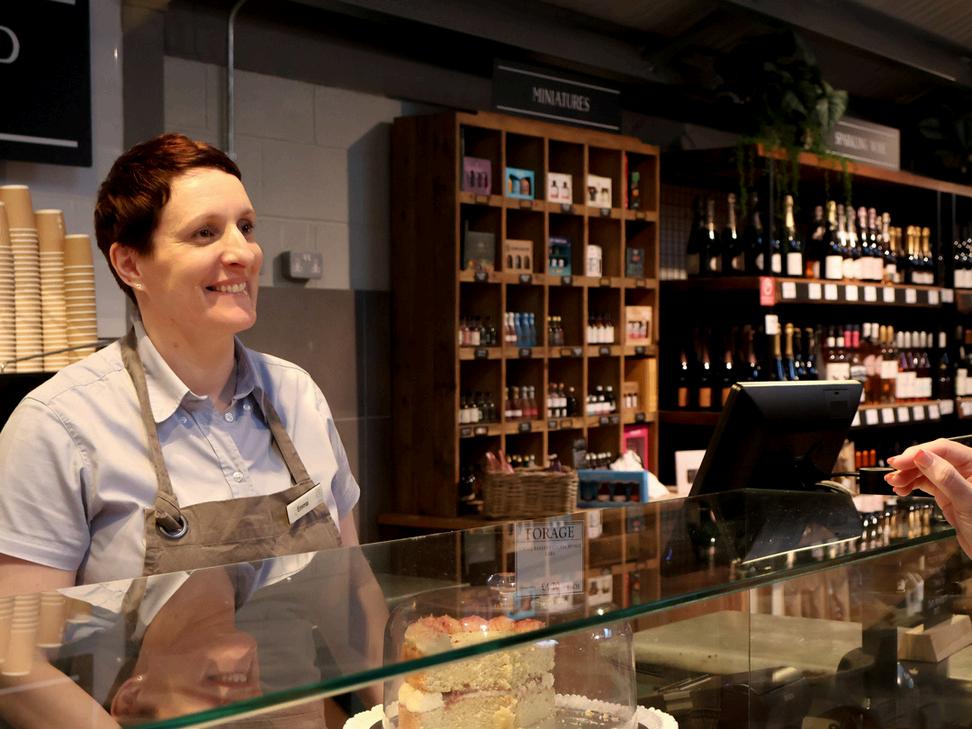
Our philosophy is simple: why settle for generic when you can embrace the extraordinary? We carefully select products that resonate with our values and ideals. From delicately scented candles that evoke wonder to unique treasures waiting to be discovered, our collection transcends the ordinary
Step into our newly formed plant area a haven for plant enthusiasts and novices alike
Our passion for plants knows no bounds. We believe that every garden should be a canvas of colours, regardless of the season Armed with knowledge and inspiration, our visitors leave with the confidence to create showstopping gardens. Whether it’s spring blooms or winter foliage, we ’ re here to nurture your green dreams
Coppice has so much more than you expect A bridal shop, pilates studio, furniture showroom, women ’ s fashion, an aesthetics studio, a salon, and an art gallery all call Coppice their home from home. We are proud to have such a diverse set of businesses here, not least to give our customers a unique shopping village experience.
By Macy Smith - Coppice Garden CentreFor more information please visit us at www.coppicegc.com Facebook & Instagram: Coppicelifestyle


Gold, a symbol of wealth, power, and divine connection, has captivated human civilizations for millennia. Its rich, lustrous hue, often associated with the metal of the same name, has played a significant role in art, culture, and history, transcending geographical and temporal boundaries.
The allure of gold dates back to ancient civilizations. The Egyptians, around 2600 BCE, were among the first to exploit gold's value, using it extensively in their art and burial practices. The famous burial mask of Tutankhamun, adorned with gold and precious stones, epitomizes the significance of gold in ancient Egyptian culture. Gold symbolized the eternal, the divine, and was believed to possess protective qualities in the afterlife
In Mesopotamia, gold was used in the creation of intricate jewellery and ceremonial objects The Sumerians, one of the earliest civilizations, valued gold for its beauty and rarity, incorporating it into the adornments of their temples and statues of deities
DID YOU KNOW?



The Greeks and Romans further perpetuated gold's esteemed status. The Greeks, around 550 BCE, began minting gold coins, establishing gold as a standard of trade and wealth Greek mythology is replete with references to gold, such as the story of King Midas, whose touch turned everything to gold, symbolizing both the power and potential peril of wealth
The Romans, building upon Greek traditions, utilized gold extensively in their currency, jewellery, and architecture. The Roman Empire's prosperity was often measured by its gold reserves, and the mining of gold became a crucial economic activity. Roman emperors, adorned in gold, were depicted as godlike figures, emphasizing gold's association with divinity and power
During the Middle Ages, gold retained its status as a symbol of divine favour and earthly wealth The Catholic Church amassed vast quantities of gold, using it to embellish cathedrals, altars, and religious artefacts The lavish use of gold in religious art and manuscripts underscored its sacred significance.
The Renaissance period saw a renewed fascination with gold, spurred by the revival of classical art and culture Artists like Leonardo da Vinci and Michelangelo incorporated gold leaf into their masterpieces, enhancing their visual splendour and conveying themes of immortality and divinity The quest for gold also drove exploration, with explorers like Christopher Columbus seeking new trade routes and territories rich in gold
The discovery of gold in the Americas during the 16th century had profound global implications The influx of gold from the New World into Europe led to unprecedented economic growth, but also to exploitation and conflict Gold rushes in the 19th century, such as those in California and Australia, spurred mass migrations and the rapid development of new settlements.
In contemporary times, gold continues to hold significant value, both economically and culturally It remains a cornerstone of monetary systems, symbolising stability and prosperity. In art and fashion, gold's timeless appeal endures, reflecting both tradition and modernity.


The history of the colour gold is deeply intertwined with human civilization From ancient Egypt to modern economies, gold has been revered not just for its material worth but for its symbolic power It represents a spectrum of human aspirations and achievements, embodying the quest for beauty, wealth, and the divine Gold's enduring allure is a testament to its unique place in our collective history and imagination.
What’s your favourite colour?
Letusknowwhatyourfavouritecolourisandwewillfeatureit! Tagus:@wildjacspirits



Creating a garden that teems with life and supports local wildlife is a dream for many Ornamental trees, with their stunning visual appeal and ecological benefits, are a perfect way to enhance your garden's biodiversity At Frank P Matthews Ltd, we are renowned for our wide selection of high-quality trees, offering a huge range of ornamental varieties that are particularly beneficial for wildlife. Here are some top picks:
Crab Apples (Malus) are a musthave for wildlife-friendly gardens. They offer spectacular blossoms in spring that attract a plethora of pollinators, including bees and butterflies Come autumn, they are adorned with small, bright apples that are a favourite for birds such as blackbirds, thrushes, and waxwings. Additionally, their dense foliage offers excellent nesting opportunities.

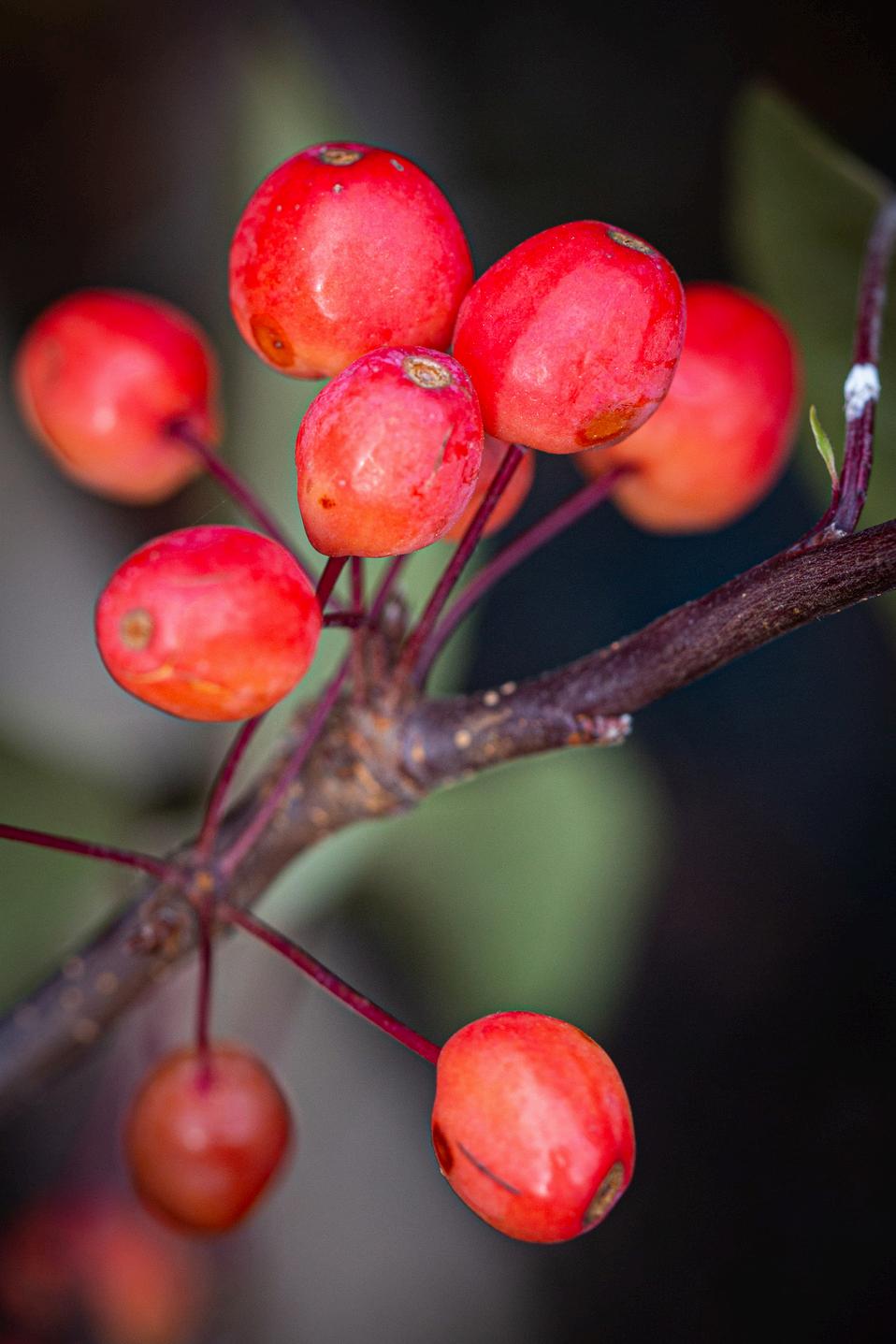
Flowering Cherries (Prunus) are not only a feast for the eyes but also a blessing for garden wildlife Their early spring blossoms provide an essential nectar source for bees and other pollinators when food is scarce. They are available in all shapes, sizes, and colours and truly offer a solution for any garden space Our variety Prunus ‘Starlight’® was named RHS Plant of the Year at this year's Chelsea Flower Show!

Rowan (Sorbus aucuparia) trees are exceptional for attracting wildlife. In spring, their clusters of flowers draw in bees and other pollinators By autumn, the vibrant berries provide a crucial food source for birds like thrushes and waxwings. The Rowan’s airy canopy also offers shelter and nesting sites for various bird species
Hawthorn (Crataegus monogyna) is a versatile and wildlife-friendly tree variety Its spring blossoms are a magnet for bees, while the autumn berries, or haws, feed birds such as redwings and fieldfares. Hawthorn’s dense, thorny branches offer excellent nesting and roosting sites, providing safe havens for small birds and mammals.



Maples (Acers) are an ornamental tree variety that brings multiple benefits to wildlife. Their flowers offer nectar for bees, and their winged seeds are relished by birds and small mammals The dense foliage provides excellent cover for nesting birds and insects, making it a valuable addition to any wildlife-friendly garden
Birch (Betula) trees are another fantastic ornamental tree variety that supports a diverse range of wildlife Early spring catkins provide essential pollen for bees, and its small seeds are a food source for birds like finches The peeling bark and foliage create habitats for insects, which in turn attract insectivorous birds, enriching your garden’s biodiversity.
For more information on Frank P Matthews and the incredible selection that they stock visit: frankpmatthews.com or find them on social media @frankpmatthews
Frank P Matthews
Berrington Court, Tenbury Wells, Worcestershire, WR15 8TH
By Zak Southwood
By integrating these ornamental trees from Frank P Matthews into your garden, you can create a beautiful, thriving habitat that supports a diverse array of wildlife
Not only will you be contributing to local biodiversity, but you'll also enjoy the enhanced beauty and ecological balance that comes with a wildlife-friendly garden. Here are some of our other top tips:
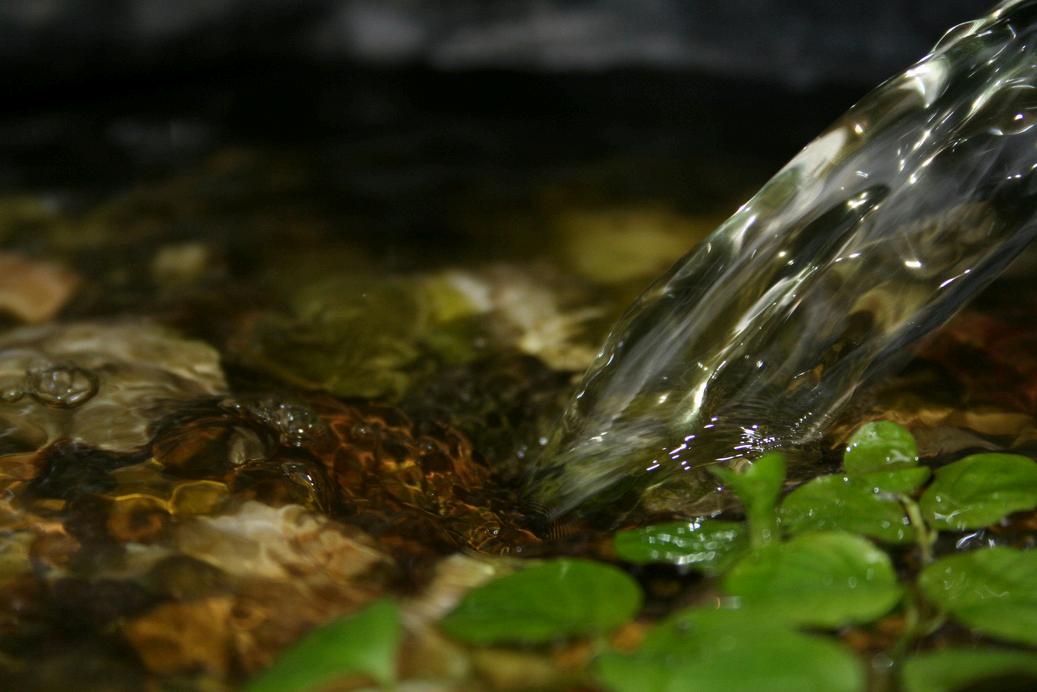
Plant a variety of tree species to offer different food sources and habitats throughout the year. This diversity supports a wider range of wildlife
Arrange trees in clusters or corridors to create natural pathways and habitats for animals.
Leave some fallen leaves and deadwood in your garden. These materials support insects and fungi, which are crucial components of the ecosystem.
Incorporate water features like bird baths or small ponds to attract and support amphibians, birds, and insects

For more details on these and other tree varieties, visit Frank P Matthews Ltd at www.frankpmatthews.com and begin your journey toward creating a vibrant, wildlife-friendly garden today


Sowing seeds in late summer in the UK can be a great way to extend your gardening season and prepare for the next year This period is ideal for both flowers and vegetables that can tolerate cooler temperatures as autumn approaches. Here are some seeds that are well-suited for late summer sowing, along with care tips and what you can expect:
by Ash BourneSome fast-growing vegetables are perfect for late planting or succession sowing. Getting the kids involved is a great way to learn and help them see quick results without the patience needed for some of the longer-season vegetables Here are some of the easiest to get started with:

Care Tips: Radishes need well-draining soil and full sun to part shade. Water regularly to keep the soil evenly moist
Expected Outcome: Ready to harvest in just 4 weeks, radishes are fast-growing and perfect for a quick crop
Care Tips: Choose a spot with partial shade to prevent bolting. Keep the soil moist and use a nitrogen-rich fertiliser
Expected Outcome: Spinach grows quickly and can be harvested as early as 5-6 weeks after sowing Expect fresh leaves through autumn and possibly into winter if protected with a cloche

Top tip:
Grow the vegtables that you like to eat This cuts down on wastage and encourages your attention.


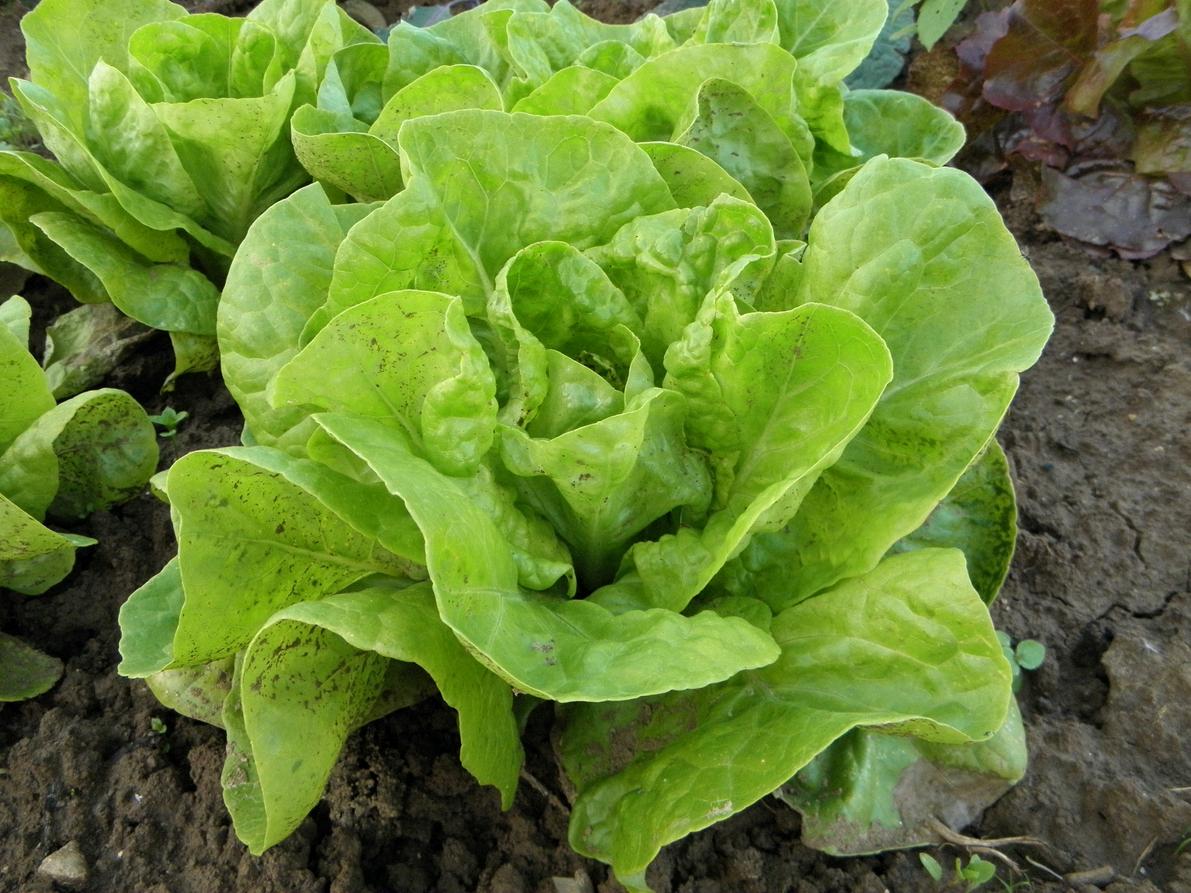
Care Tips: Sow in a cooler part of the garden and consider using a light mulch to keep the soil cool and moist
Expected Outcome: Lettuce can be harvested within a few weeks for baby leaves or allowed to mature into full heads.
Top tip:
Ensure your lettuce receives consistent moisture and partial shade to prevent it from bolting and becoming bitter
Care Tips: Plant in full sun and welldraining soil. Calendula is droughttolerant but benefits from occasional watering during dry spells.
Expected Outcome: Flowers from late autumn into winter, providing vibrant colours and attracting pollinators.
Care Tips: Prefers full sun and well-drained soil. Keep the soil moist until germination.
Expected Outcome: Will establish over winter and bloom beautifully in spring.

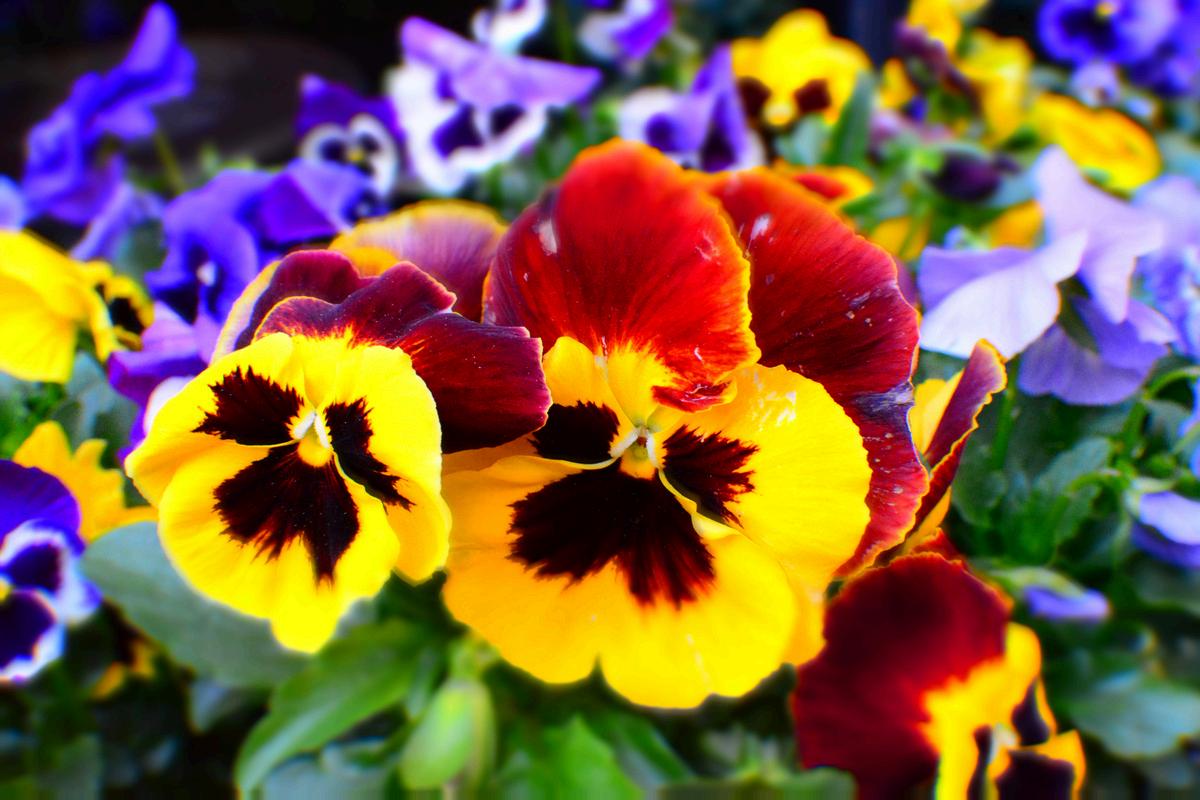
Care Tips: Pansies need fertile, well-drained soil and can handle full sun or partial shade. Regular deadheading will encourage more blooms.
Expected Outcome: Sowing in late summer will result in flowers throughout the winter and into spring, depending on the severity of the winter.
Care Tips: Sow in light, well-drained soil and do not overwater. Partial shade can help prevent bolting
Expected Outcome: Harvest leaves as needed. If allowed to flower, coriander will attract beneficial insects

Care Tips: Prefers a cooler, shaded spot with moist, fertile soil
Expected Outcome: Leaves can be harvested for fresh use in salads and cooking, typically within 6-8 weeks

Watering: Keep the soil consistently moist, especially during germination and in dry weather. Protection: Use cloches or fleece to protect early sprouts from unexpected late summer or early autumn frosts Mulching: Apply a thin layer of mulch to conserve moisture and suppress weeds By choosing these plants for late summer sowing, you can enjoy a prolonged harvesting season and a vibrant garden even as the temperatures drop.


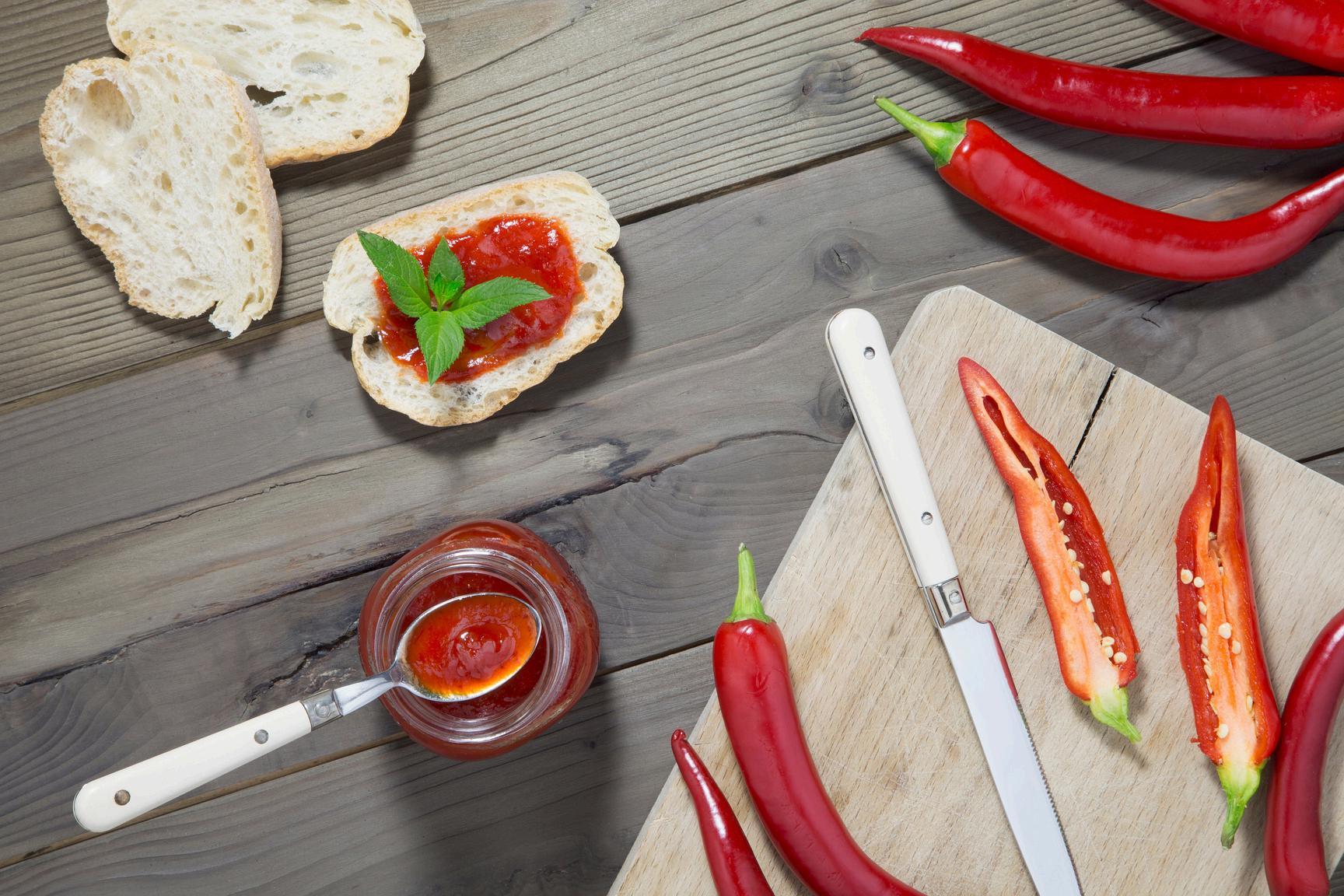
2 red peppers
500g very ripe tomatoes
4 cloves of garlic
4 red chillies (less or more to taste)
2tbs fresh grated ginger (large thumb)
30ml fish sauce
300g caster sugar
100ml red wine vinegar
2x 250ml jars
SERVE:
Serve with BBQ sirloin steak, lamb steaks, or BBQ halloumi slices
STORE:
Store in the fridge for up to 2 months
A great use for surplus tomatoes or chillis from your garden. Why not make some as gifts?
1.
Blend the skinned whole tomatoes in a food processor along with garlic, chillies, ginger, and fish sauce until the mixture reaches a puree consistency (approx 2 minutes)
2.
Pour the mixture into a pan with the sugar and vinegar. Bring to the boil and slowly stir. Once the mixture has reached boiling point, reduce to a simmer and cook for 30-40 minutes, stirring occasionally to prevent sticking
3.
Taste to check the chilli heat and add more fish sauce or vinegar as required
By Bryony Taylor4
While the mixture is cooking, wash and sterilise 2 x 250ml jars.
5
When the mixture has reached the desired consistency, pour it into the sterilised jars. When cool enough to handle, close the jars and leave to cool completely before refrigerating

With every purchase of a 70cl bottle we will send you out a grow your own wildflower pack!
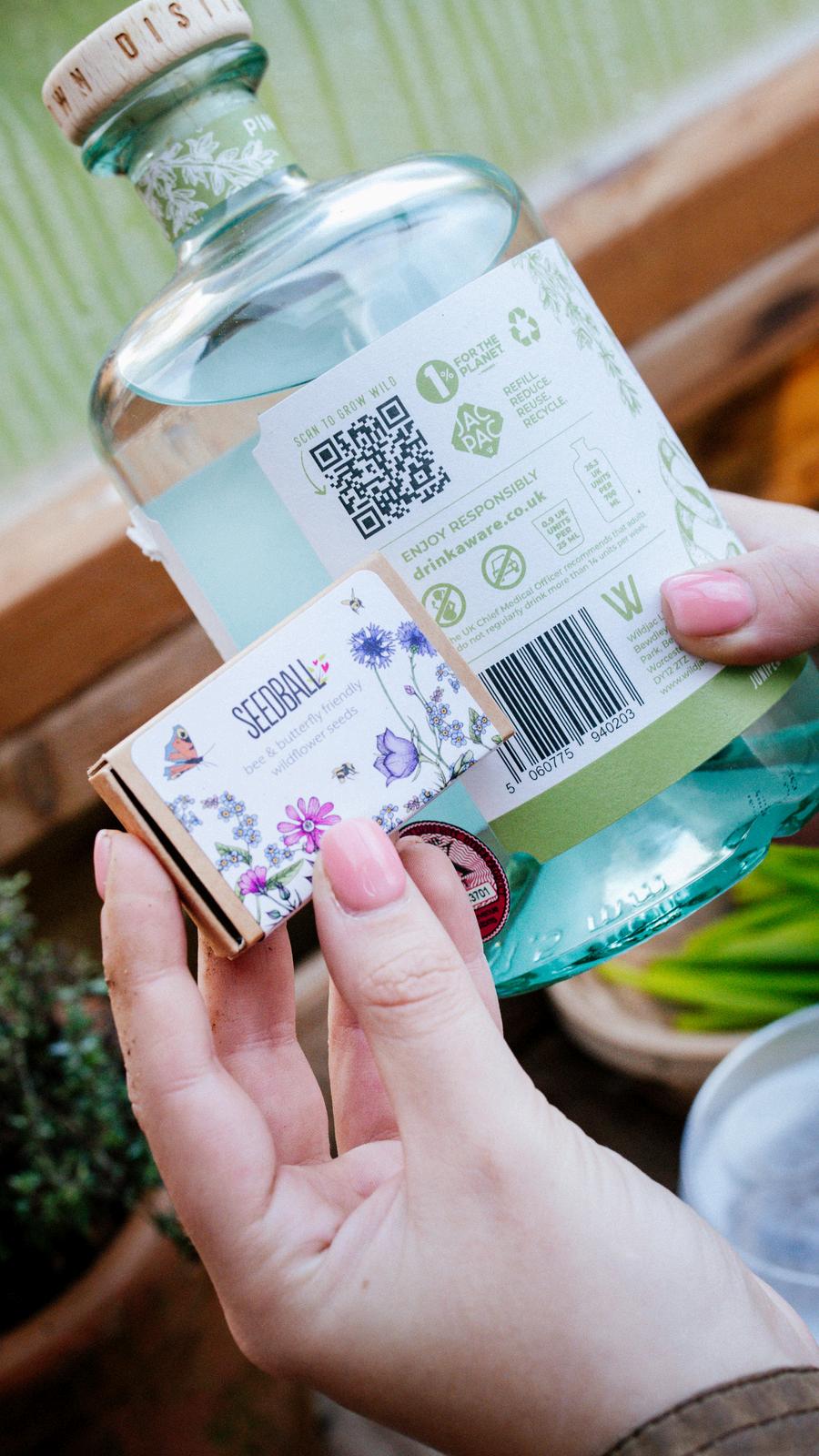
1
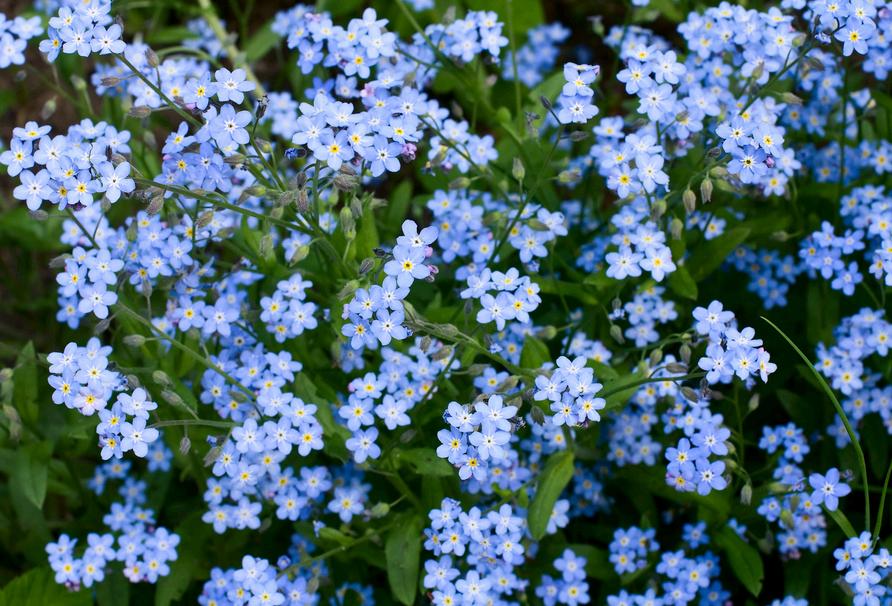
2

3
Scan the QR code on the back of your bottle and fill in your details so we know where to send your pack.
Use your wildflower seeds in a small area or in a pot and water This included a selection of seeds encased in clay and ready to scatter
Want to make your own seedballs?
Discover more from our charity partners Worcestershire Wildlife Trust about other great ways to support and boost wildlife in your garden!
We are running a workshop for you to make your own seed balls! With all elements supplied this workshop will take you through the step-by-step process to create your own seed balls which you can take home and use. Refreshments included. Check out our events page for more info.
Wait for them to sprout and share your pics with us on social using #growwildwithus

Celebrate the summer season with an exclusive giveaway from Wildjac and Atlantic Blankets worth over £200! You could win a beautiful blanket from Atlantic Blankets. Traditionally woven in the British Isles from the finest fabrics, these blankets are sustainably designed with comfort and care in mind – keeping you close to the coast, inside and out
In addition, the winner will receive four bottles of Wildjac gin. Crafted with premium botanicals in the heart of the Wyre Forest, these gins offer a taste of summer with each sip.
Don’t miss this opportunity to win the ultimate summer bundle. The competition will close on 1st September 2024.

Win a Summer Bundle here
SCAN THE QR CODE TO ENTER OR CLICK THE LINK ABOVE


Enthusiasm and inspiration are boundless this season. Nourish your mind and soul with my top picks:

Liz Knight seeks to reinvigorate our love for cooking with edible flowers through her incredible recipes and engaging writing style. She includes 20 different flowering plants, all of which are easily sourced, and takes us on a delicious journey through more than 100 recipes, from Rose Arrabiata to Lilac Lemon Possets, as well as a Marigold Martini.
Nature therapy is the practice of reconnecting with the natural world Whether you find your sense of connection in the adventure of windswept cliffs, the solace of a forest, the comfort of your own garden, or the joy of tending a plant in your home, nature has the power to refresh your well-being and help you find your sense of self again.

A celebration of simple, seasonal home cooking full of flavour, comfort, and joy With more than 100 recipes from Kate Humble's kitchen table, this is food to share from breakfast time to the evening meal – for lazy days, busy weeknights, gatherings, and everything in between.

Inspired by the wisdom of the natural world, Evergreen is the essential guide for anyone looking to unearth their inner strength and bring more joy and contentment into their everyday life

The perfect guide for any gardener looking for inspiration on how to create a pollinatorfriendly garden all year round.
Pollinators are essential to life on Earth Yet bees, butterflies, and other beneficial insects are struggling due to climate change and habitat loss Fortunately, what we choose to plant in our gardens can help them to thrive
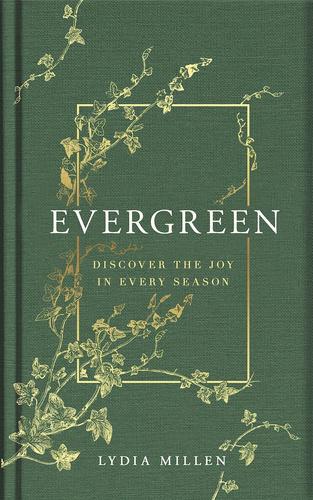
Inspiration, motivation and entertainment -something for everyone this season:
Here are my top picks.

1
The Sustainable Jungle Podcast is a missiondriven show, focusing on solutions for the world’s sustainability and conservation challenges. Hosts Lyall and Joy talk with some of the most interesting and inspiring people working to future-proof our planet
This is a business podcast with a difference Entrepreneur Grace Beverley gets to the bottom of what really goes on behind the scenes of business’s biggest hitters


3
Green Dreamer produces podcasts and alternative media projects that explore our paths to collective healing, biocultural revitalisation, and true abundance and wellness for all.

4
Caroline skips the usual glitz and glam to offer an honest perspective that resonates with mature listeners She is relatable, can joke about her age, and shares her journey from beauty counters to YouTube
It’s time to get a taste of Mel Robbins' life as a lawyer, TV host, author, and motivational speaker. Life is never smooth, especially if you wish to achieve great things. However, it becomes easier if you have Mel Robbins as a coach to improve your life.


6
UNLOCKING US BRENÉ BROWN
Conversations that unlock the deeply human part of who we are, so that we can live, love, parent, and lead with a whole heart
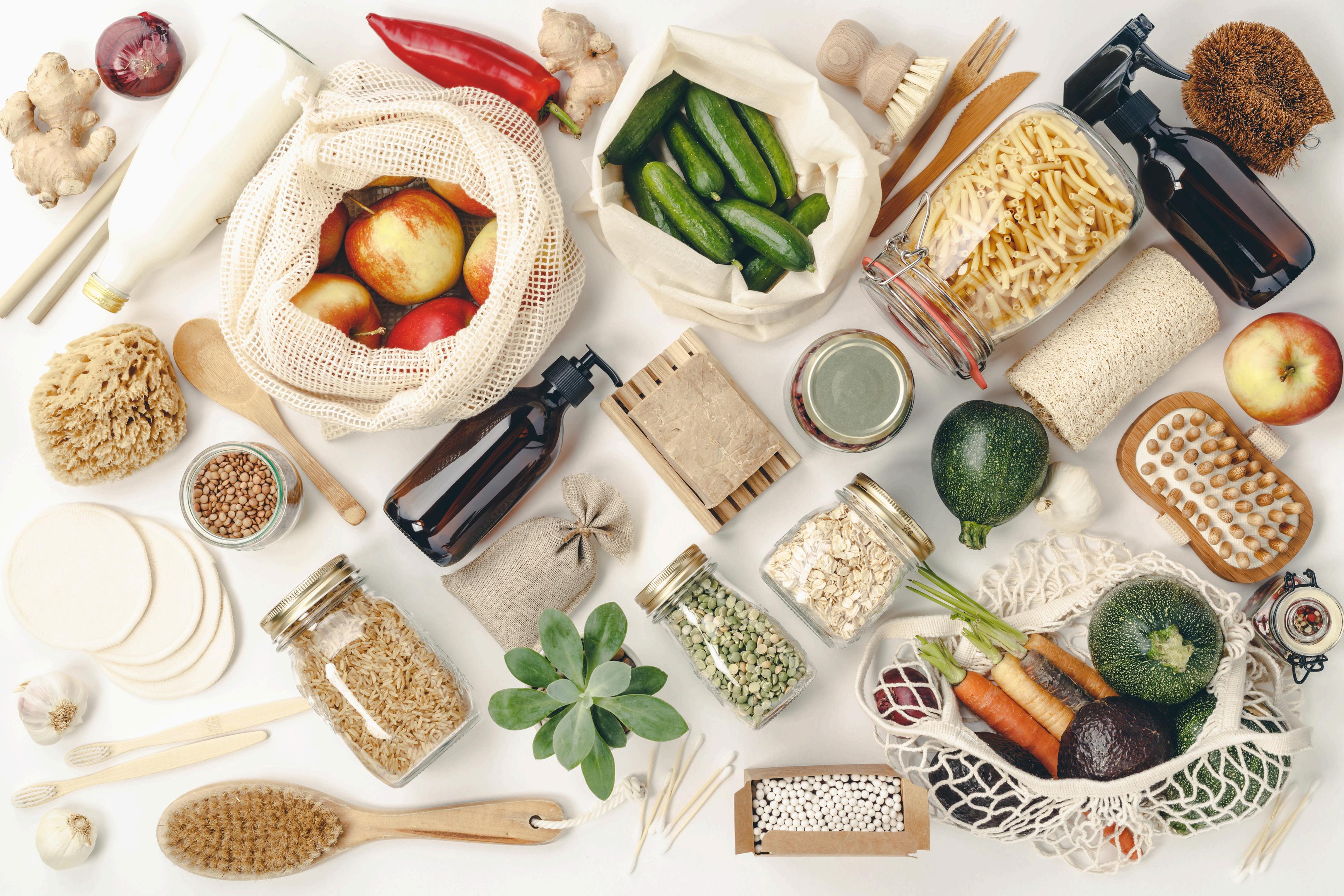

In today’s world, where environmental concerns are increasingly pressing, making sustainable choices has never been more important However, adopting a greener lifestyle often requires a shift in mindset. Here are three powerful mindset shifts that can help you live a more eco-friendly life.


A mindset of efficiency means using resources wisely and sustainably. This includes making homes more energy-efficient with LED lighting, smart thermostats, and energy-saving appliances. Conserving water through simple measures like fixing leaks, installing water-saving fixtures, and collecting rainwater for gardening can make a big difference Opting for sustainable transportation options, such as cycling, public transit, or electric vehicles, reduces carbon emissions and promotes healthier lifestyles
Shifting from convenience to consciousness involves being aware of the long-term impact of our daily choices. Reducing single-use plastics by carrying reusable water bottles and bags, choosing products with minimal packaging, and making your own cleaning supplies can significantly cut down waste and pollution Adopting DIY solutions and prioritising quality over quantity also play crucial roles in reducing our environmental footprint Embracing these habits not only helps the planet but often saves money and improves quality of life.

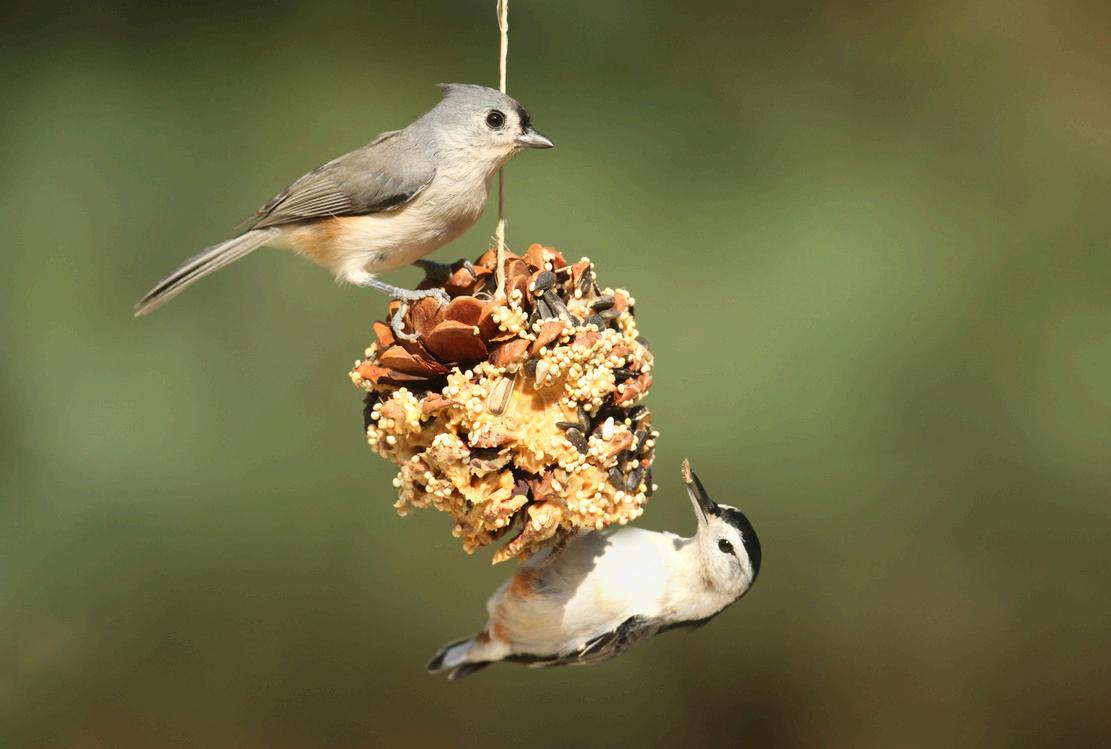
Reconnecting with nature fosters a deeper appreciation and commitment to environmental protection Spending more time outdoors whether hiking, gardening, or simply enjoying a walk improves mental and physical health while deepening our connection to the natural world Supporting local wildlife by creating a garden with native plants, bird feeders, and insect hotels helps sustain local ecosystems. Engaging in community environmental efforts, such as cleanups or tree planting, builds a sense of community and shared responsibility These activities not only enhance personal well-being but also contribute to a healthier planet.
Shifting your mindset towards sustainability involves making conscious, deliberate changes in your daily habits By becoming more aware of your choices, using resources efficiently, and reconnecting with nature, you can make a positive impact on the environment and inspire others to follow suit Every small action counts towards a greener, more sustainable future
By Katie Jones

In a world increasingly aware of the environmental impacts of consumer habits, turning towards ecofriendly crafts not only nurtures creativity but also fosters a sustainable lifestyle
For those ready to take on a medium to difficult challenge, these craft ideas offer a blend of complexity and environmental responsibility.
Creating a quilt from recycled fabrics is a fantastic way to repurpose old clothing, curtains, or unused textiles that might otherwise end up in a landfill This project is perfect for those with basic to intermediate sewing skills
The complexity of the quilt can be adjusted by the design patterns you choose ranging from simple blocks to more intricate designs like log cabin or star patterns

Not only do you get to save materials from waste, but you also end up with a personal keepsake or a thoughtful gift.
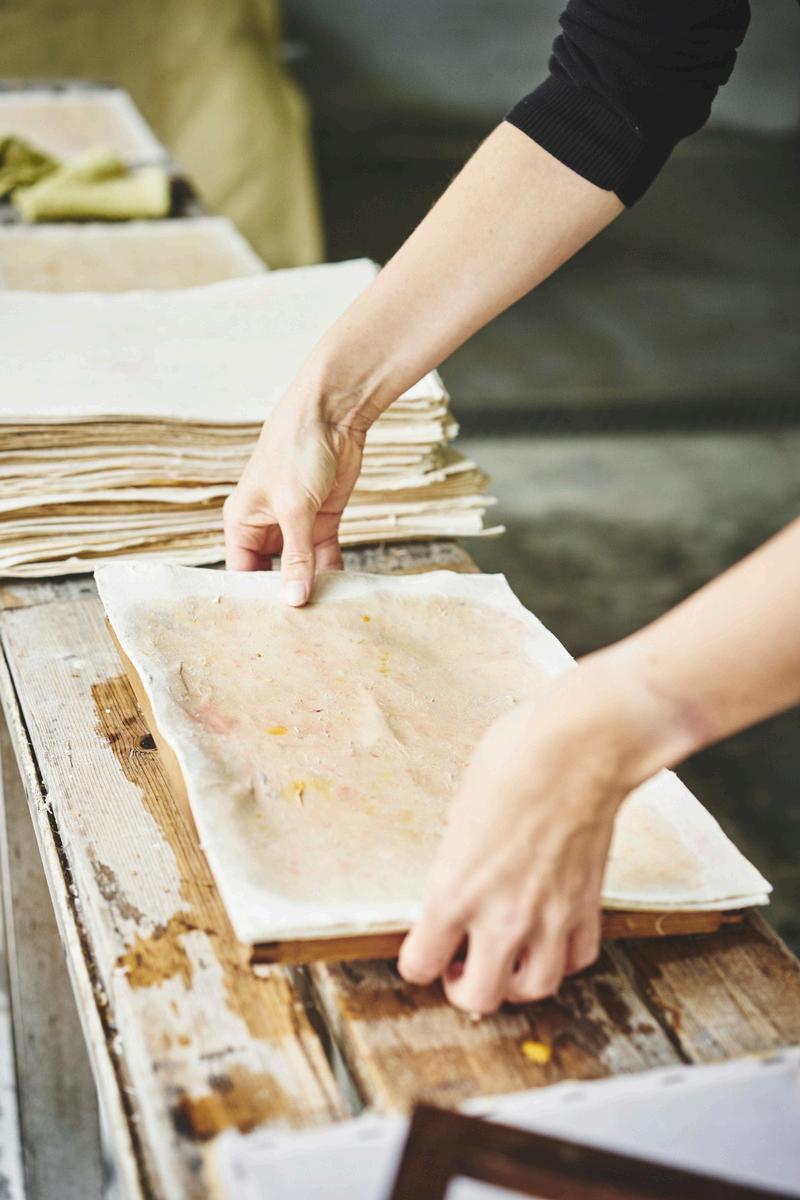
Papermaking is a rewarding craft that allows for a lot of creativity and is particularly appealing to those interested in homemade stationery or art papers. By using recycled paper products, natural fibres, and even incorporating elements like leaves or flower petals, you can create beautiful, unique sheets of paper.
This craft does require some setup to create a pulping station and a drying area, but the end products are worth the effort, perfect for special occasions or personal correspondence.

Soap making can be an intricate craft, especially when using natural, locally sourced ingredients By choosing to make soaps with eco-friendly oils, herbs, and scents, crafters can avoid the harsh chemicals found in many commercial soaps. Advanced techniques include swirling colours, embedding shapes, or layering scents, which allow for customisation and creativity
Woodworking can be an environmentally friendly craft when using reclaimed materials such as wooden pallets These can be transformed into everything from garden furniture to stylish indoor pieces.
Depending on your tools and skills, you could create anything from a simple bench to a more elaborate swing or shelving unit. Sanding, painting, or treating the wood with eco-friendly products will ensure your creations are both sustainable and safe for indoor use

Experimenting with natural dyes offers a wonderful opportunity to use kitchen scraps like onion skins, avocado pits, and used tea bags, which can dye fabrics beautiful shades of yellows, pinks, and browns
This craft involves medium to advanced techniques, including preparing the fabric and managing dye baths
The results are environmentally friendly, and the process is much less toxic than using synthetic dyes.


Felting is a fantastic way to use natural wool fibres to create everything from decorative items to practical pieces like coasters, mats, or even hats and slippers
Wet felting and needle felting are two techniques that can be used, each offering different textures and complexities You can also recycle old wool sweaters by felting them in the washing machine and then cutting and sewing them into new items. Each of these crafts is designed to be not only environmentally friendly but also fulfilling, as you create something valuable from materials that are sustainable or otherwise would have gone to waste.

They are perfect for crafters who wish to challenge themselves while adhering to a philosophy of sustainability
For those interested in combining crafts with some basic electronics, creating solarpowered garden lights is an engaging project Using recycled materials for the housing like mason jars, glass bowls, or old lamp shades and installing solar panels can illuminate your outdoor space or balcony This project not only recycles old materials but also reduces energy usage, adding a charming ambience without additional electricity costs.

Learning a new craft in a class fosters creativity, builds social connections, and enhances skills through shared experiences and collaboration.
Some of the team’s top picks for the summer season.

This summer, I’ve been loving my Dock & Bay towel It’s quick-drying, easy to pack, and made from 100% recycled materials. Dock & Bay is working towards becoming carbon neutral and is certified B Corp, so you know they’re serious about sustainability, which is key for me. AND the dog loves it!
I love my bird feeder because it attracts a variety of beautiful birds, filling my garden with life and colour Watching the birds visit brings me peace and joy, and I look forward to discovering new species and observing their fascinating behaviours each day



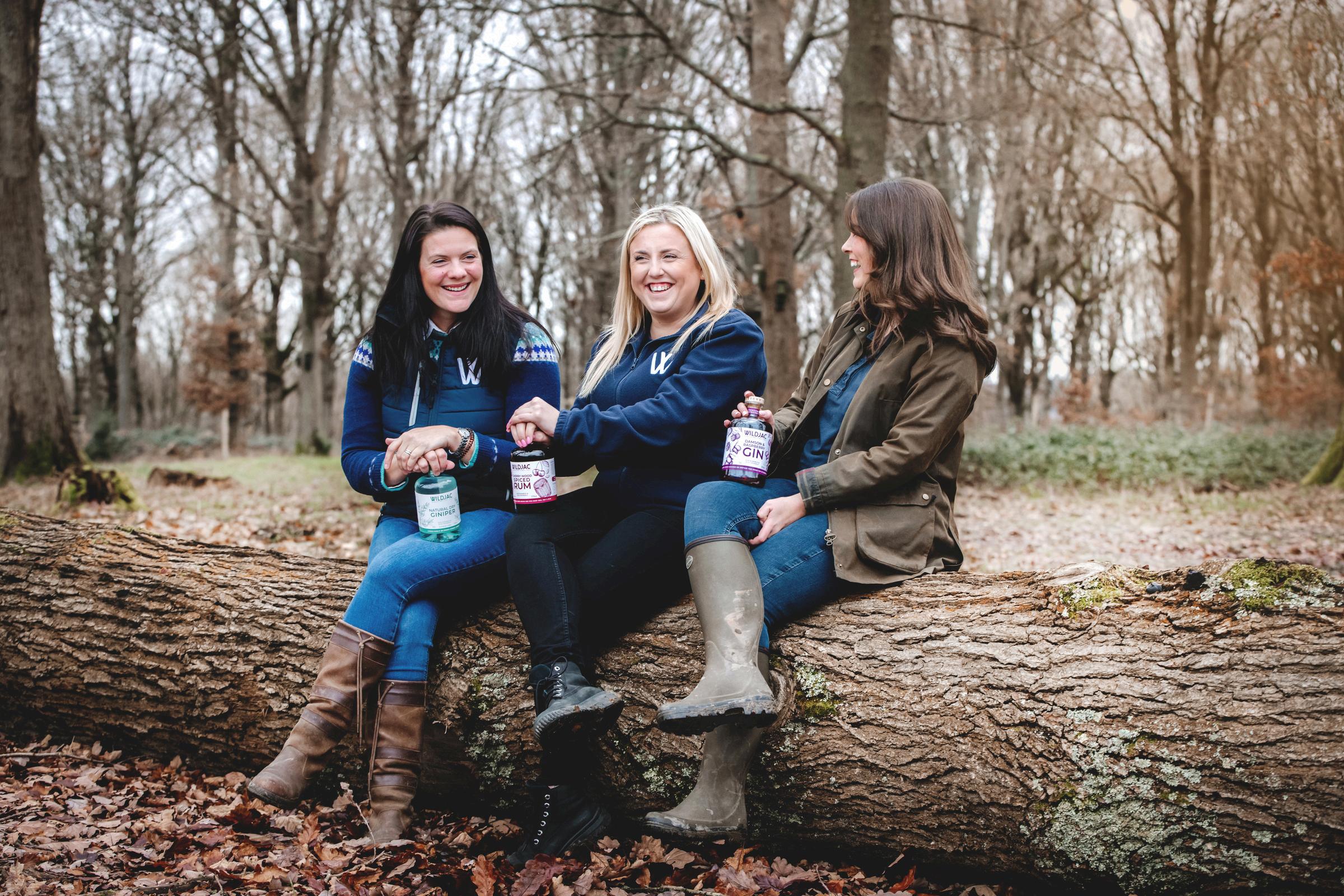
I love to have fresh flowers at home in the summer, and a hand-picked sprig from the garden always brings a smile to my face. I love that our friends at Rhyse Farm upcycled our bottle for this arrangement and am definitely going to copy this!
